I PAINT WHAT I AM
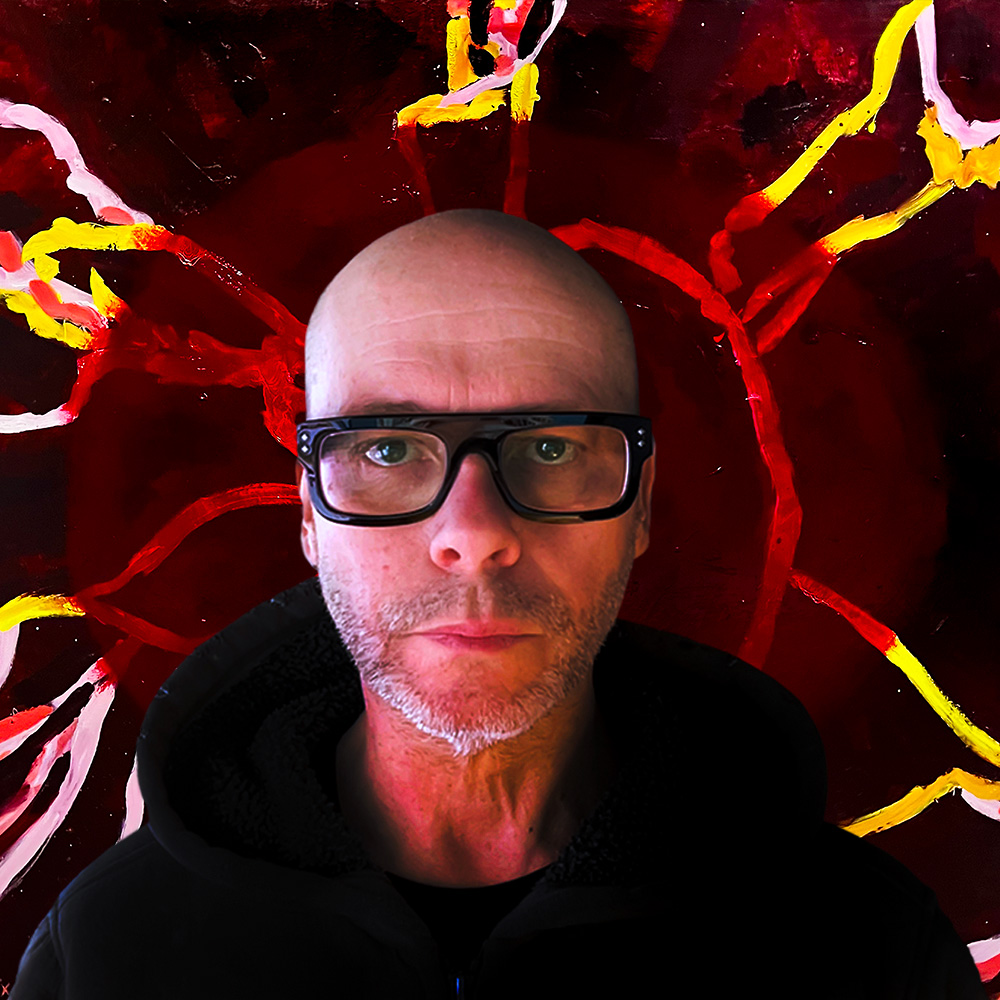
Now, what to think of the past year?
The only sensible thing I can say is that being an artist is a matter of evolution.
In some ways it reminds me of an old Buddhist saying.
It's not the result, it's the journey, stupid!
BEHIND THE CANVAS
"An artist is not paid for his labor but for his vision."
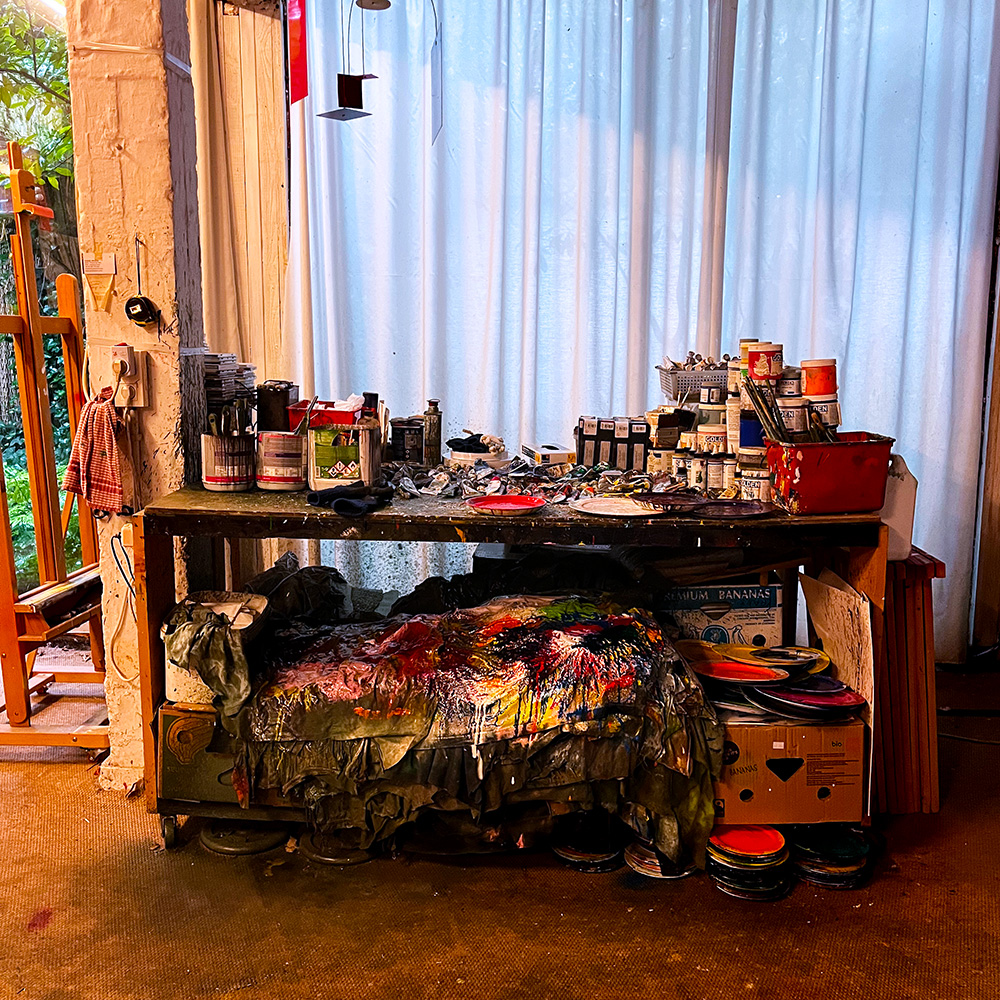
Studio workbench 2024.
All that painting and repainting, layer upon layer, never giving up, trying again and again, being happy with the result and then not.
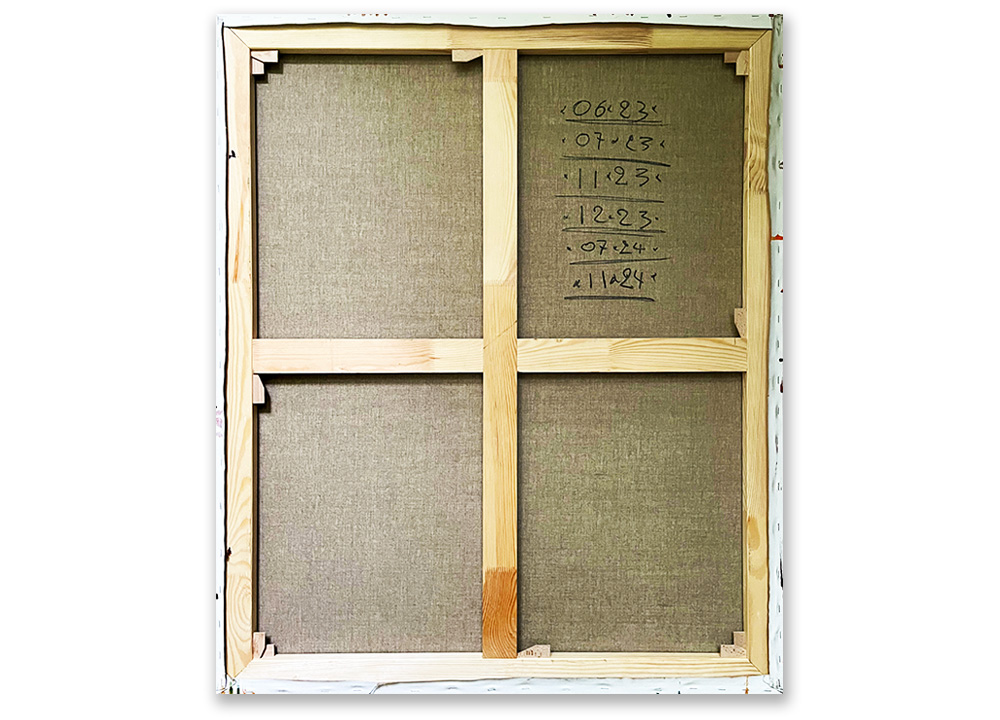
The back of a canvas with all the months in which I worked on that painting.
Such is the life of a painter …
DRAWINGS
"Making a drawing is like giving shape to freedom."
ON AN IPAD
Finger drawing on an iPad is a bit strange. It lacks all the tactile qualities that make drawing on paper so much fun. Well, I have to try anyway.
It turns out it's not so much the drawing itself that's so different (that's actually quite easy), but what you do with it once you've finished it.
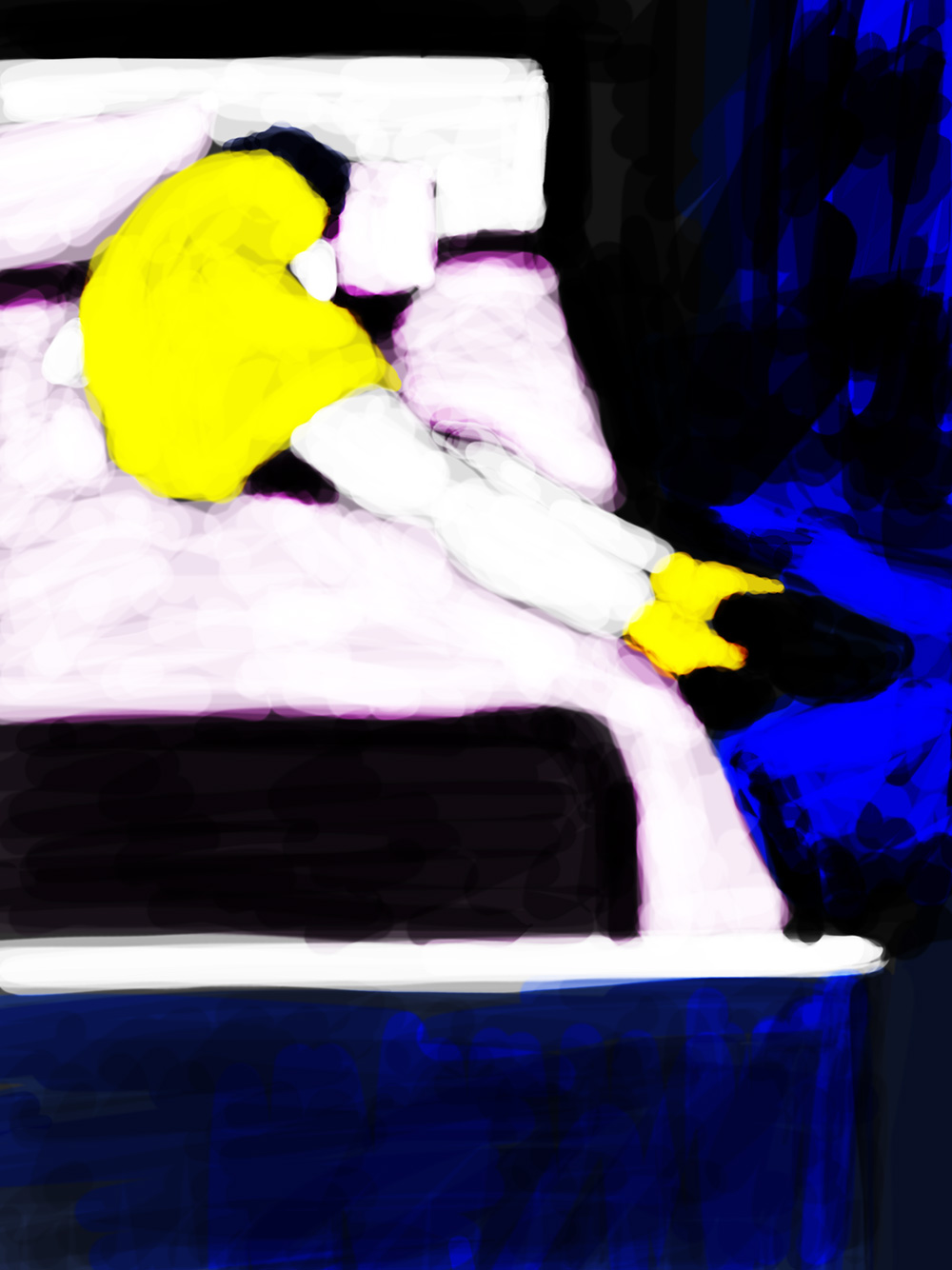
Hiding (iPad drawing).
Print them, show them on screens, NFTs...?
(If you think about it, NFTs are a commodity. They are soulless and have absolutely nothing to do with art.)
That being said, I don't think these drawings are bad at all.
WITH OIL PASTELS
After drawing on my iPad for a few days, I switched to oil pastel on paper. I think I missed too much real drawings, real colors and real paper.
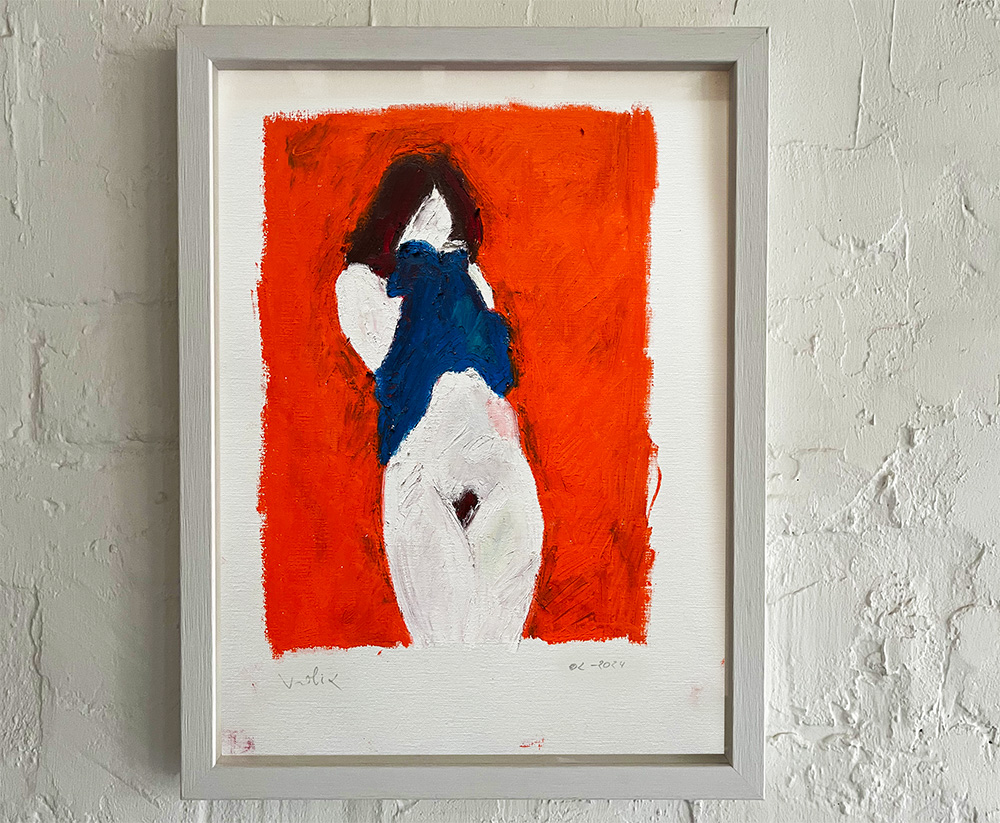
The Wall (oil pastels on paper, 30 x 40 cm, 2024).
A MATTER OF LAYERS
"The layers in a painting are a list of experiences."
Creating a painting is always a matter of layers.
The way layers work, semi-transparent or opaque, the way they work with or against each other, how a particular layer can hide something or do the opposite and point to something specific.
But above all, layers must make the subject subservient to the painting itself.
What the viewer sees is only a statement about painting (art) and not a story, however socially relevant that may be.
The use of the silhouette in my work is a form of layering.
I never show faces in my paintings. The intention is to show the human being, not the individual.
For me, not painting facial features is one of many ways to paint a layer.
The same goes for landscapes. It's never a specific tree, but the tree.
ALLA PRIMA
"Never overthink a painting."
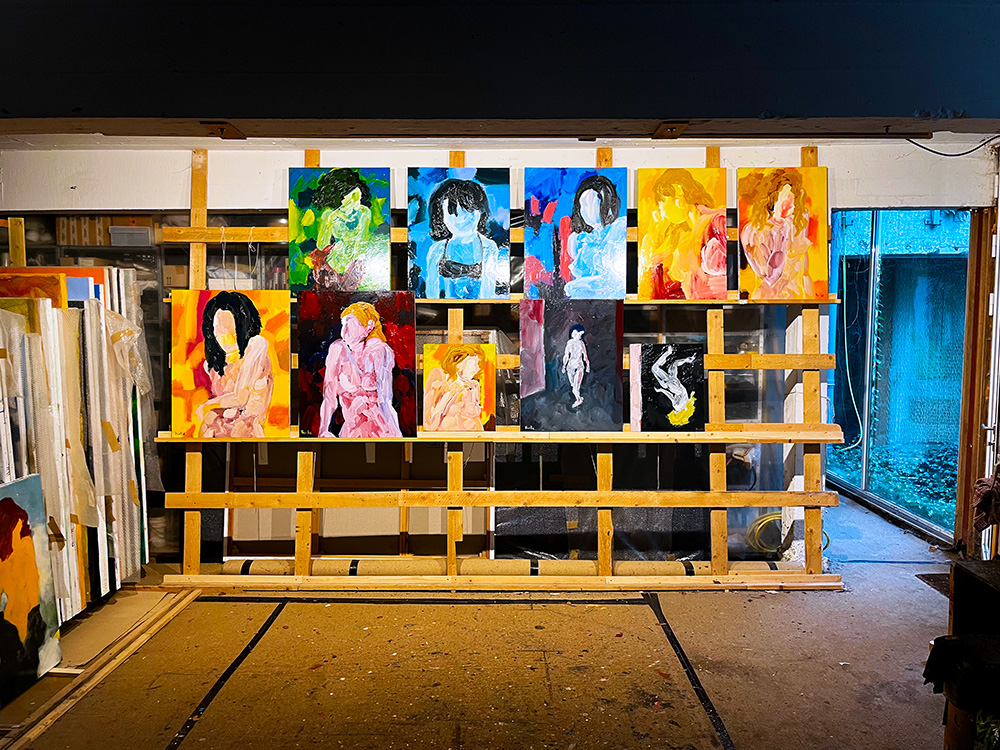
These paintings are all 'alla prima' (wet-on-wet). The background in this series are painted over the entire canvas surface, before the figure is painted. Everything happens in thick layers of pure colors, which then become 'stained' by the underlying colors.
The trick with these paintings is knowing when to stop.
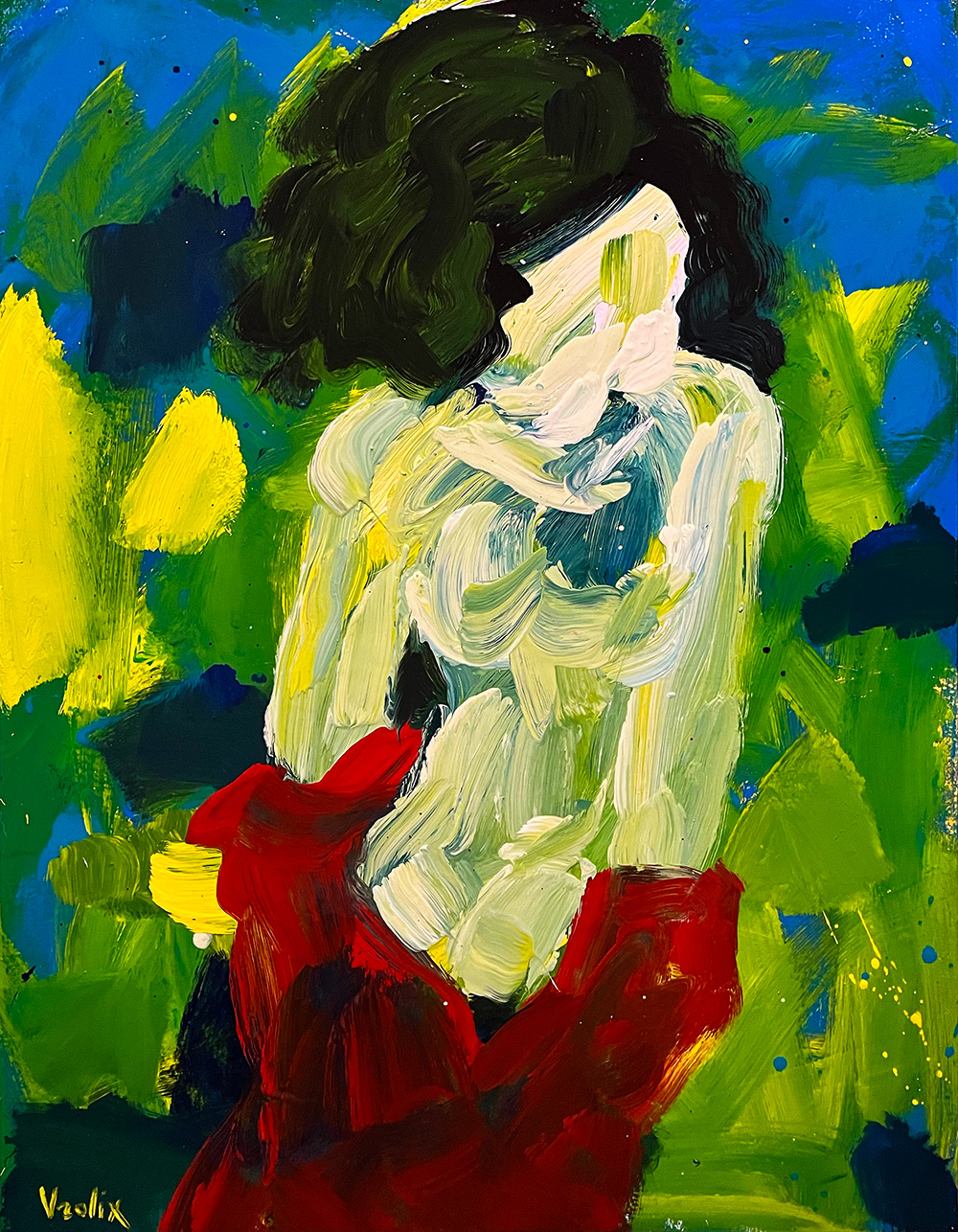
The Winter Garden (oil & glaze medium on canvas, 70 x 90 cm, 2024).
BACKGROUND ↔ FOREGROUND
"What comes after can come before."
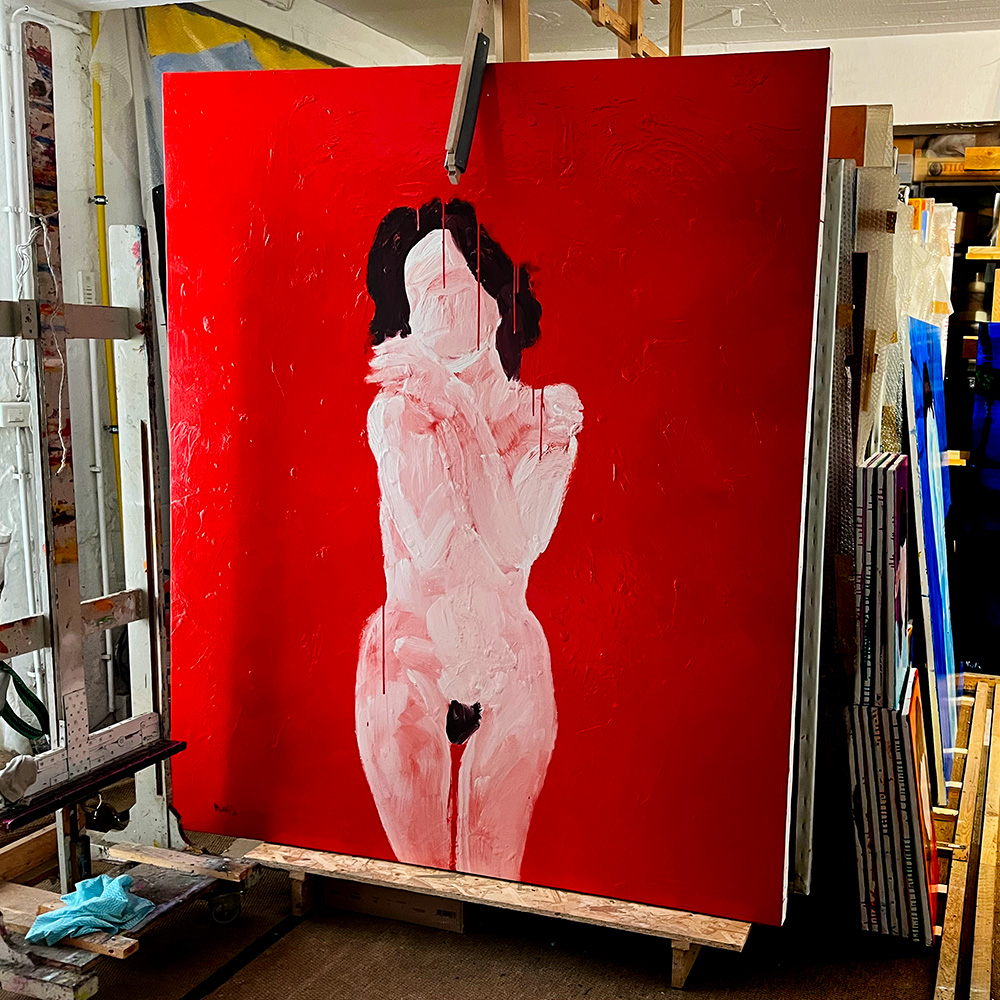
The Suffering Of Saint Barbara (oil & glaze medium on canvas, 175 x 200 cm, 2024).
This is where I got the idea to paint the foreground (figure) first, let it dry and then fill in the background. The dripping over the foreground is intentional.
The feeling that there is something wrong with the painting is exactly the tension I am looking for.
This series is roughly divided into four.
WHITEWASHED
The first group with a white background.
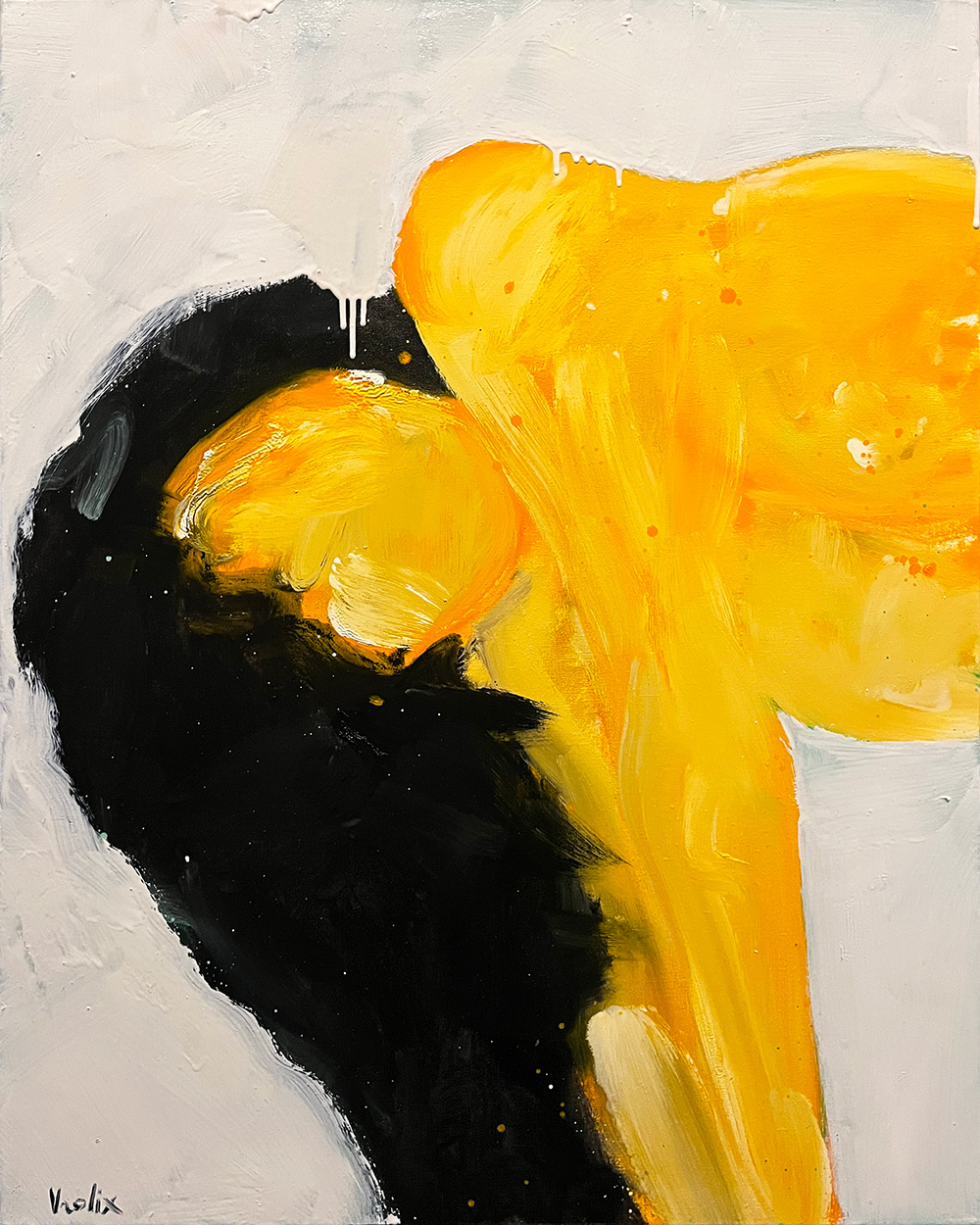
At The Beginning (oil & glaze medium on canvas, 80 x 100 cm, 2024).
ISOLATION
The second group with a colored background.
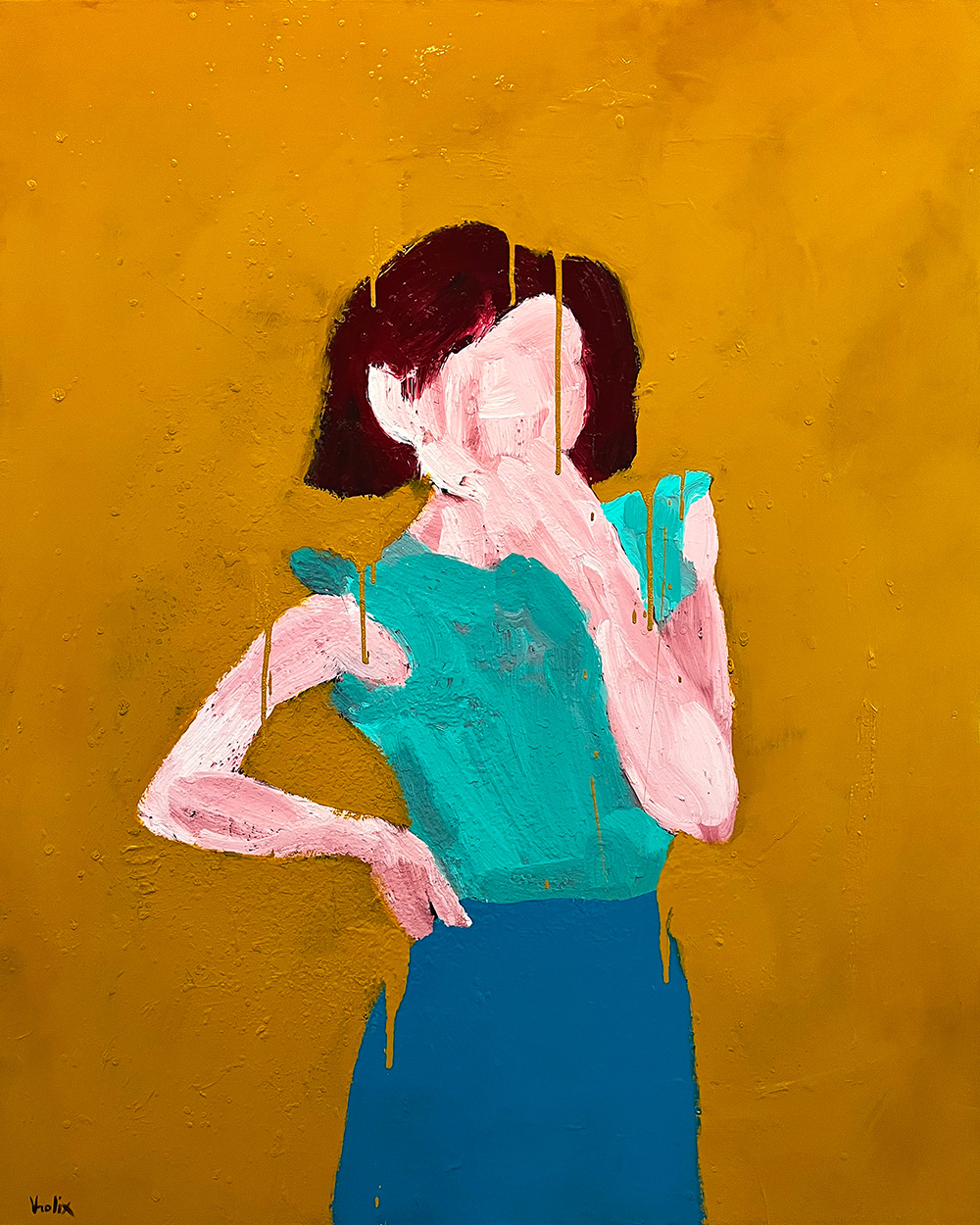
Cardboard City (oil & glaze medium on canvas, 120 x 150 cm, 2024).
CONTRADICTIONS
The third series are portraits where I changed the narrative. By turning the canvas a quarter before painting the background, I emphasize the painting itself rather than the portrait.
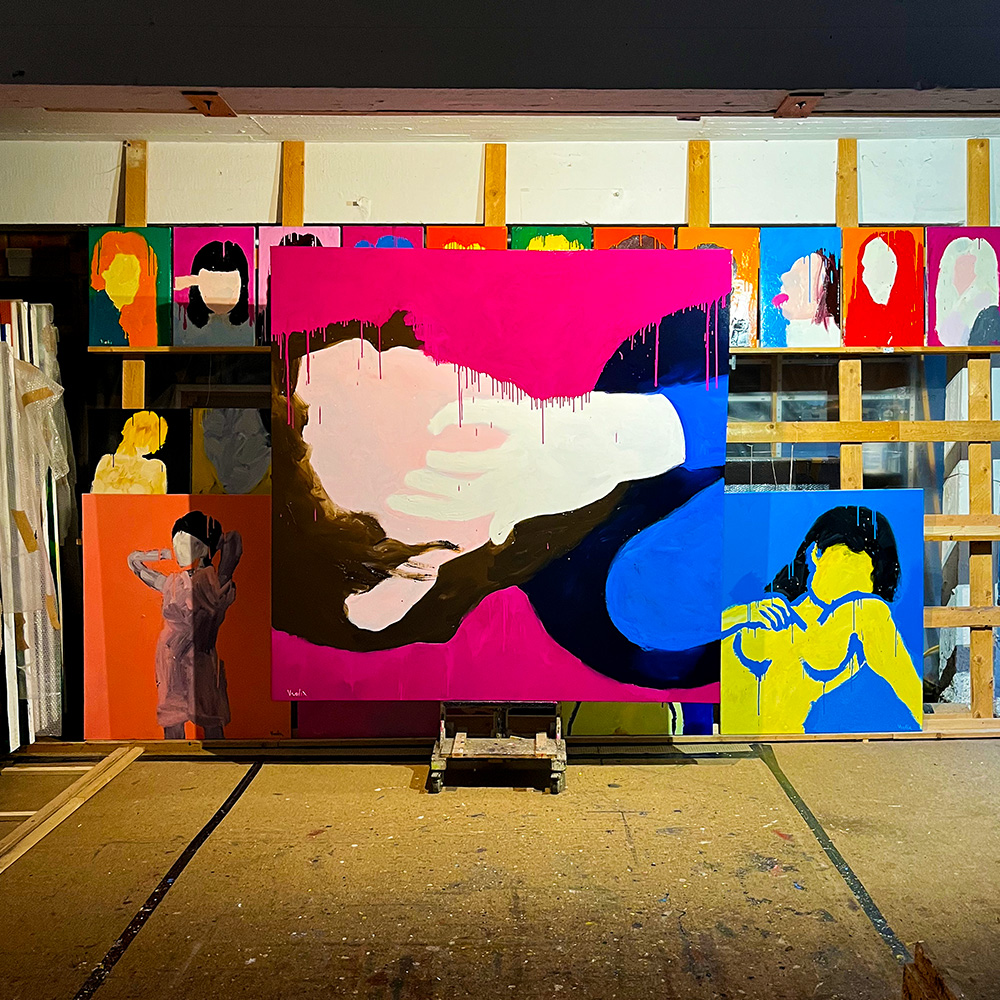
The Silence (oil & glaze medium on canvas, 200 x 200 cm, 2024).
AFTER
The last series is a kind of 'memento mori' in the four paintings from the After series. They differ from the works mentioned above in that here the transparent background is painted over skulls, after which I painted a portrait.
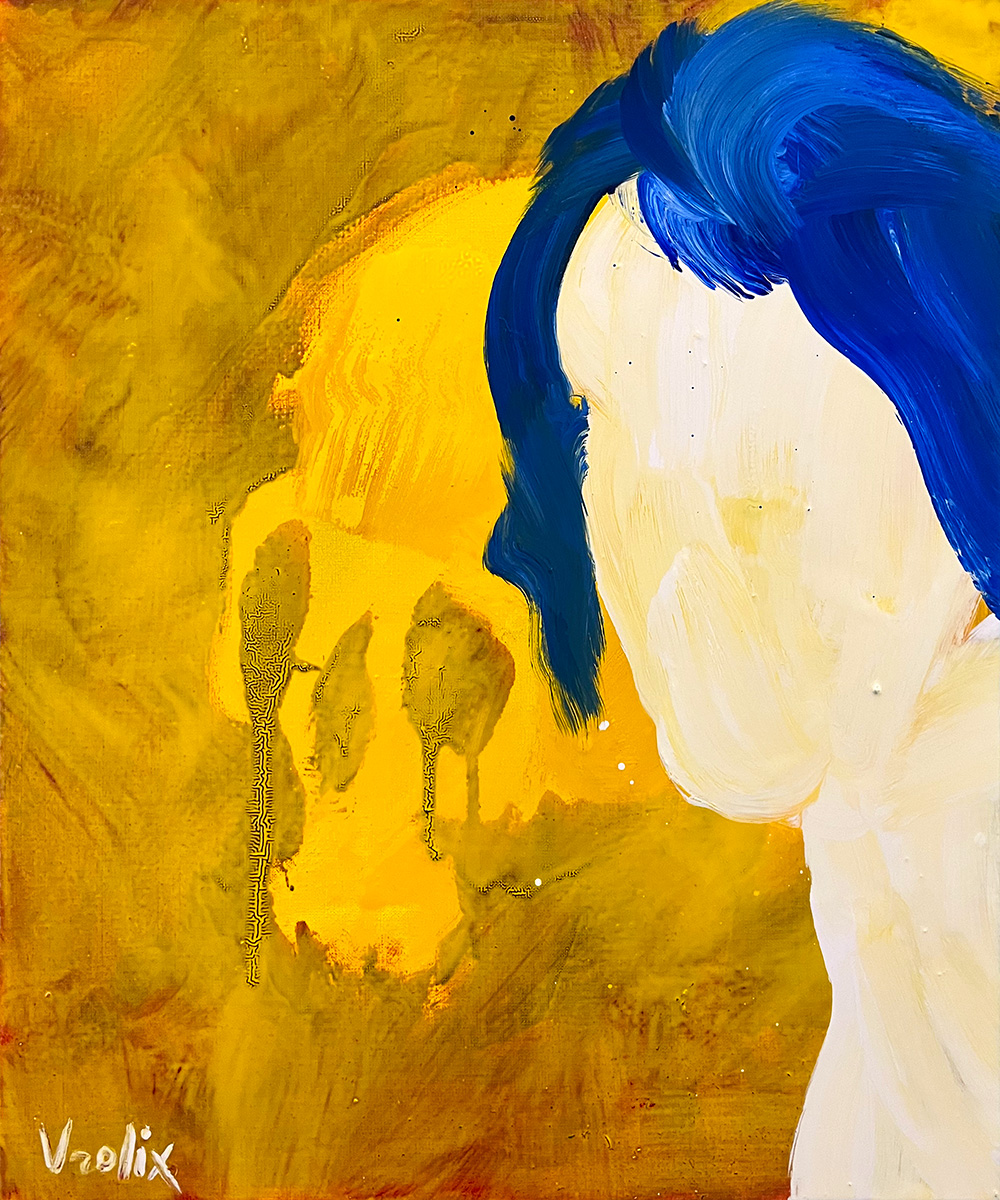
Faced Off (oil & glaze medium on canvas, 50 x 60 cm, 2024).
CARDBOARD
"Cardboard is a cheap and beautiful material. It has an identity."
CARDBOARD CITY
In this case, cardboard refers to building materials that are commonly used by the homeless. Therefore, these works refer to it.
Only the background is painted, nothing else. The background drips (invades) into the foreground, although it is no longer painted.
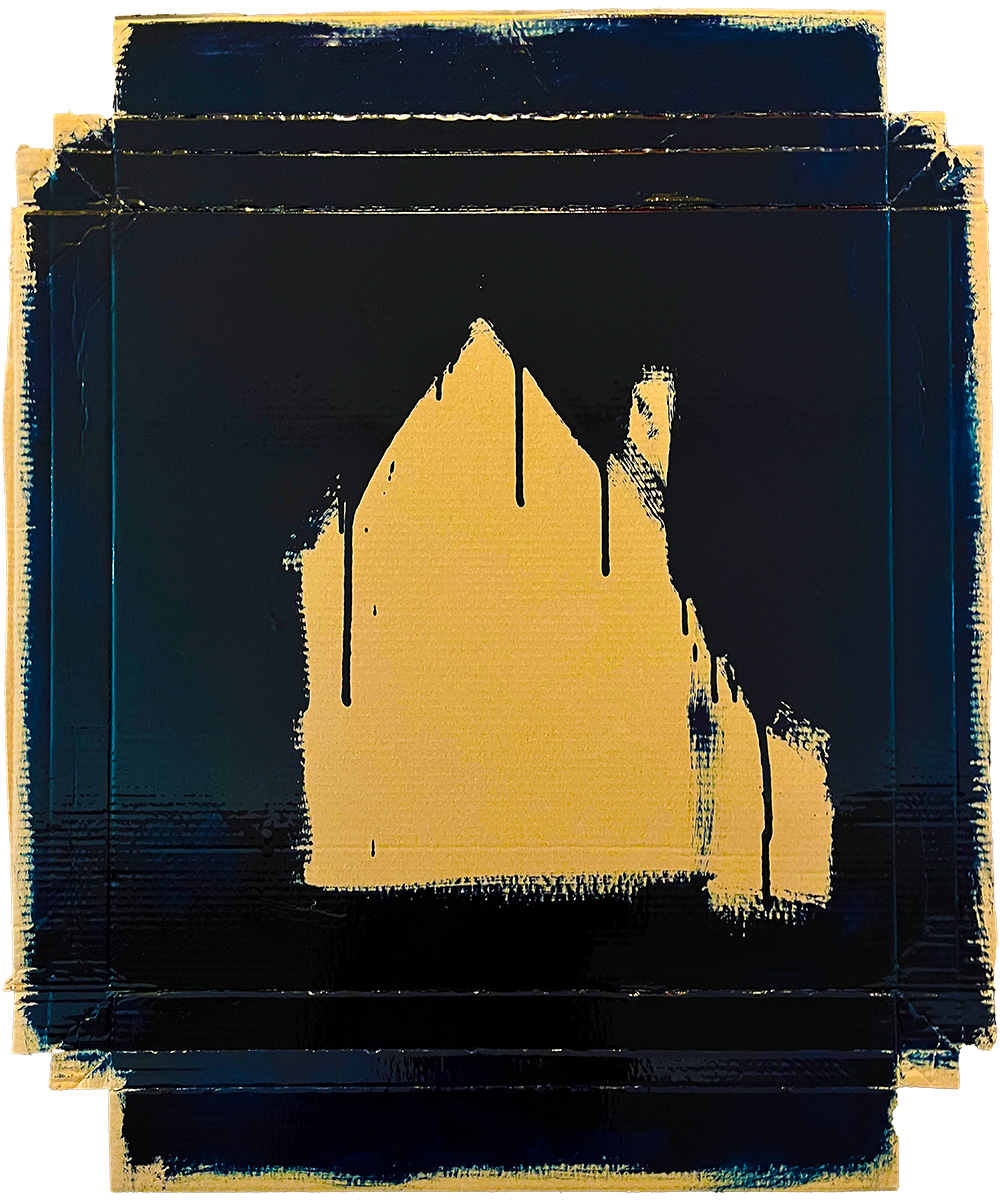
Home (oil & glaze medium on cardboard, 76 x 90,5 cm, 2024).
INTO THE FOREST
Here it is the other way around. Only the foreground (subject) is painted, the background is the cardboard itself.
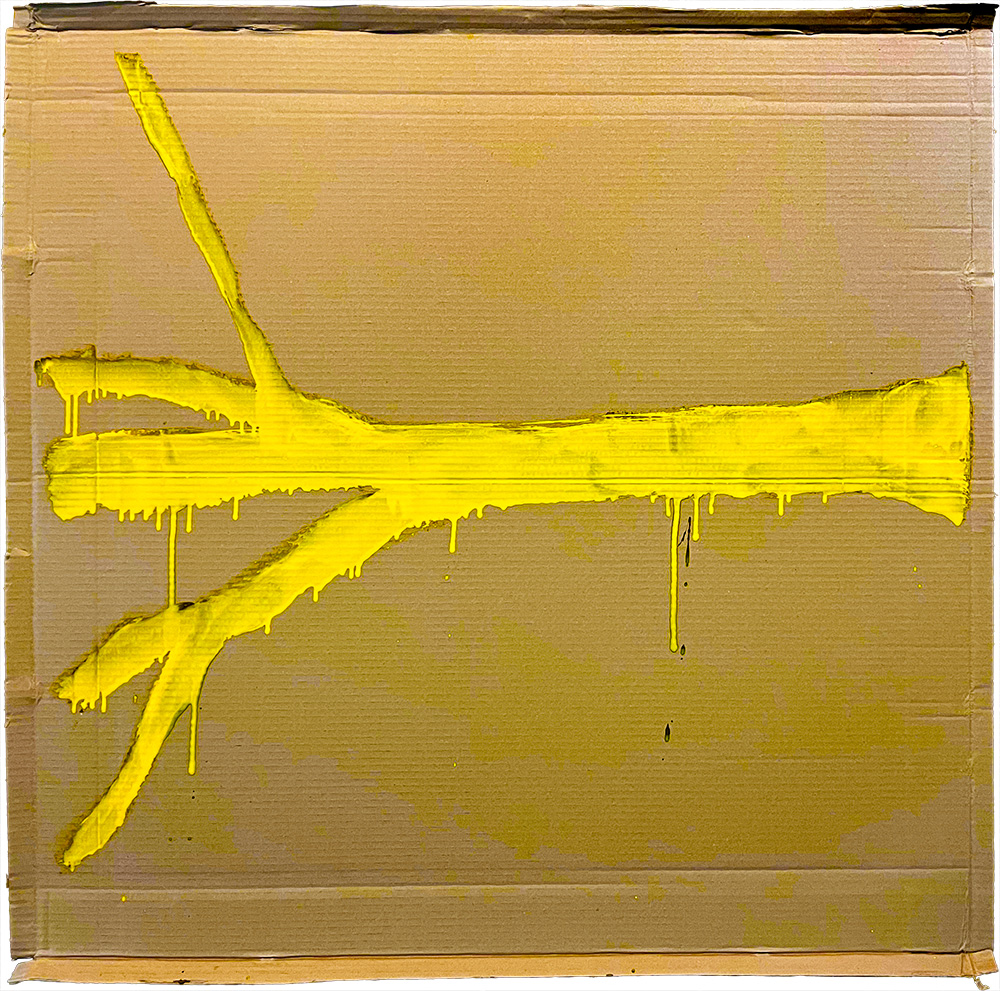
The Solitary (oil & glaze medium on cardboard, 105 x 107 cm, 2024).
MUGSHOTS
"Standing alone."
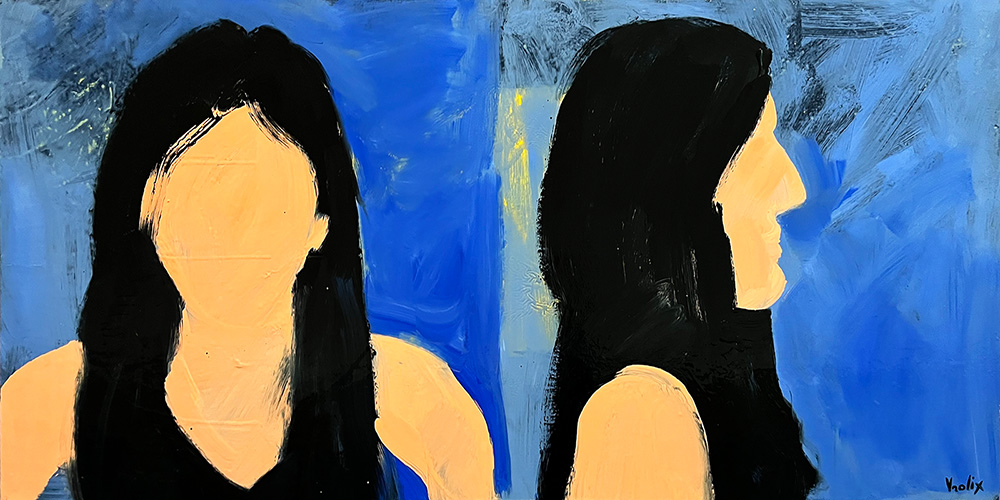
Mugshots 26.05.2024 (oil & glaze medium on canvas, 80 x 160 cm, 2024).
These legal portraits are so moving because they remind us of our true place in life, not unlike that of an artist.
This is a series that stands on its own (more or less). I was interested because you could safely call these so-called prison mugshots, of women the ultimate portrait.
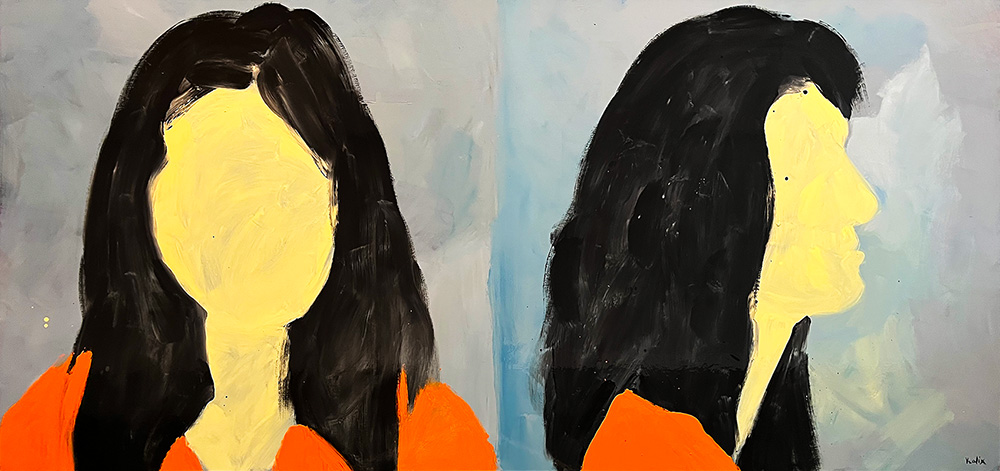
Mugshots 27.05.2024 (oil & glaze medium on canvas, 140 x 297 cm, 2024).
PORTRAITS OF MY YOUTH
"How memories exist."
THEN
These series, mainly self-portraits, are based on photographs from my childhood and are in a sense more 'traditional' in that the background is painted first, then allowed to dry and over which the figure is then painted in semi-transparent colours.
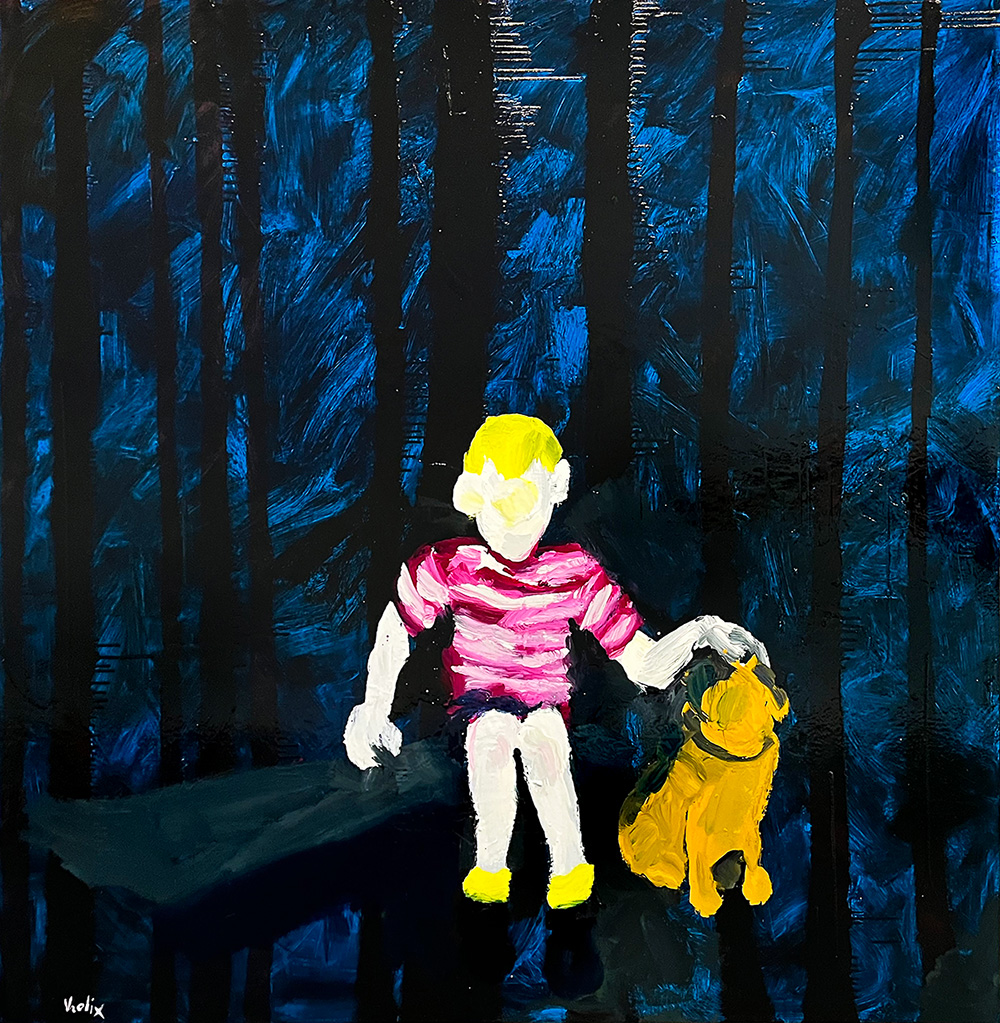
Sitting With My Dog, 1968 (oil & glaze medium on canvas, 170,5 x 174,5 cm, 2024).
As with the 'After' series, there is another story hidden behind the semi-transparent background.
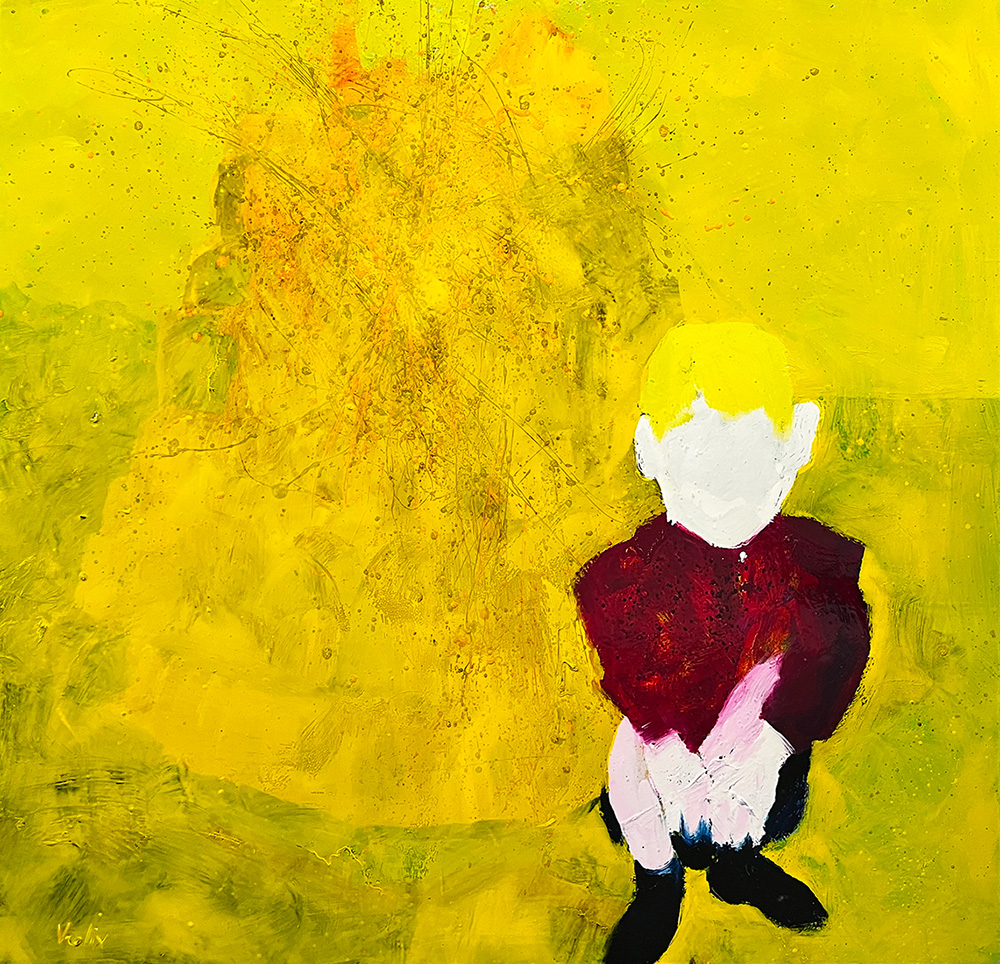
A Boy In Babylon, 1968 (oil & glaze medium on canvas, 136 x 141 cm, 2024).
ME, THEN
These very small self-portraits are based on photographs taken between the ages of approximately 5 and 8. I also wrote some memories on the four sides of the paintings.
The complete series.
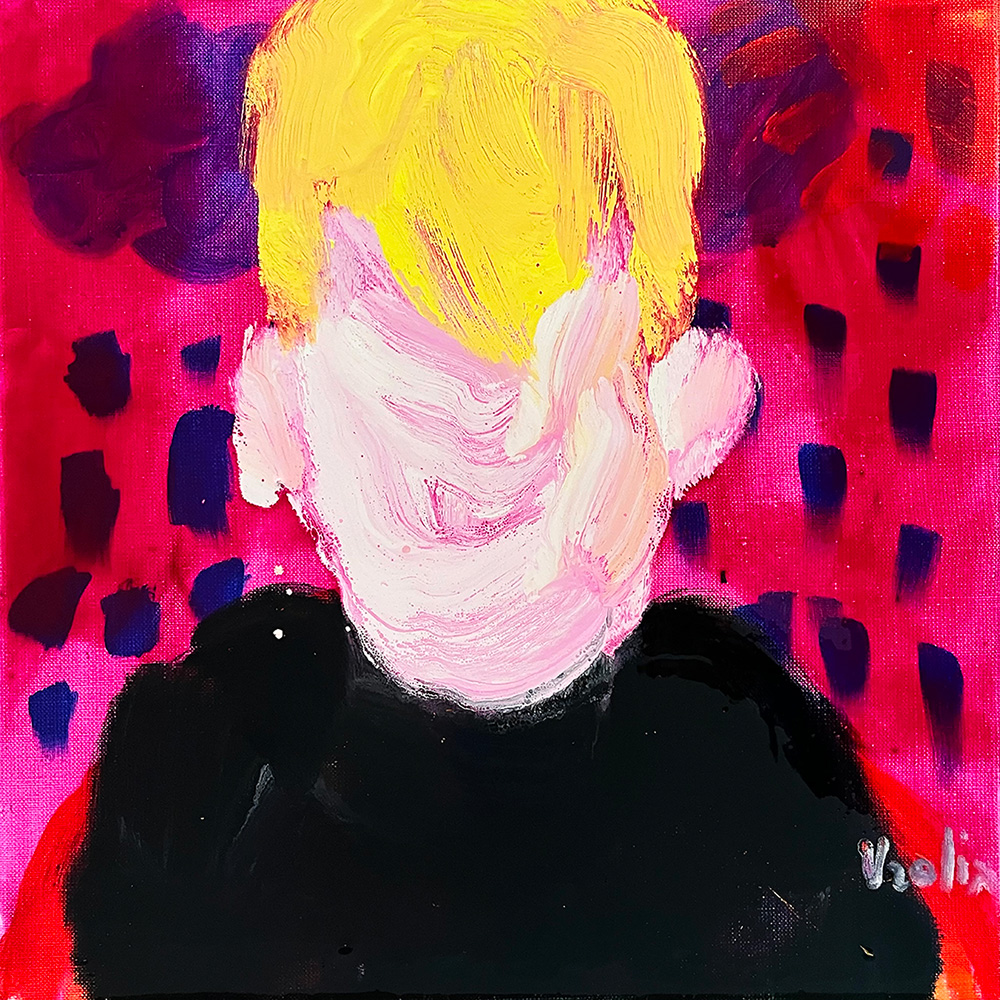
As a young boy with my grandparents, 1967, on top of a painting by my daughter at the same age (acrylic, oil & glaze medium on canvas, 4 x 40 x 40 cm, 2024).
LAYER UPON LAYER
"Painting makes life complete."
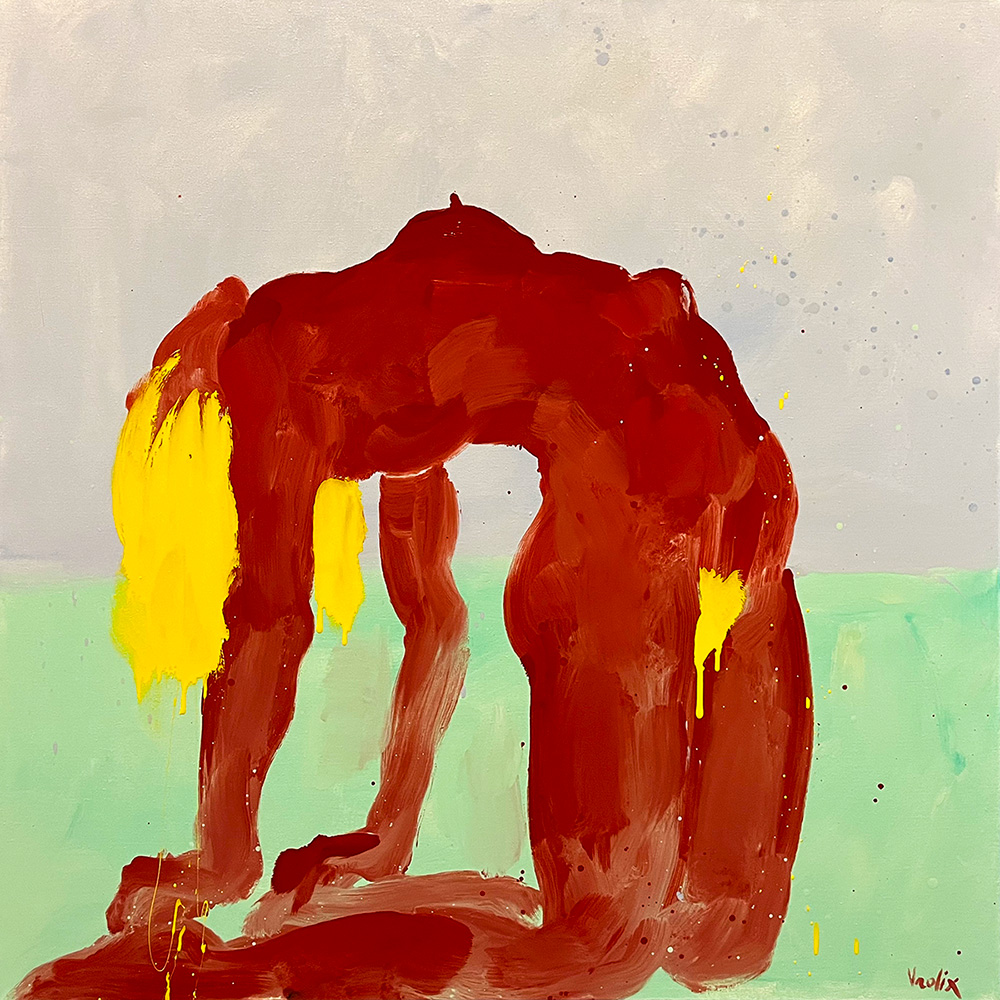
Bridge Over Troubled Water (oil & glaze medium on canvas, 100 x 100 cm, 2024).
IN BETWEEN
This is one of my favorite series, where everything comes together.
The background is painted over the entire surface of the canvas, after which the figure is painted in the still wet oil paint. In the final stage I paint the hair onto the now dry surface.
Once again the story changes.
Actually, none of these layers are abstract, they are all figurative, whether it is a wall, a corner, skin or hair. And that makes them distinct.
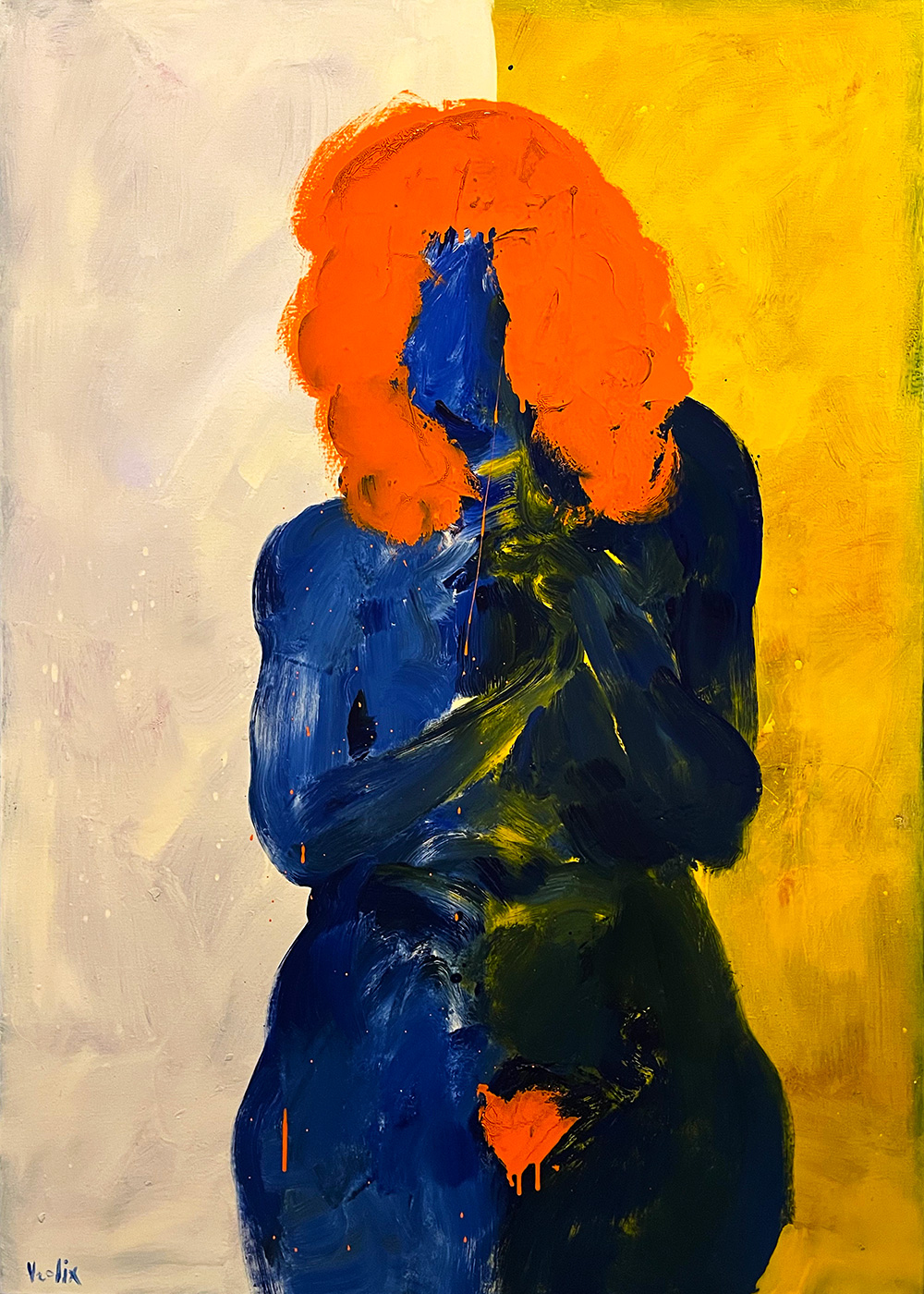
Time Is Not In Our Hands (oil & glaze medium on canvas, 100 x 140 cm, 2024).
TREE-PORTRAITS
"There is no such thing as an ugly tree."
A layer is also an image. Like in this portrait series, where I painted a tree over each portrait.
Portraits of trees, if you will.
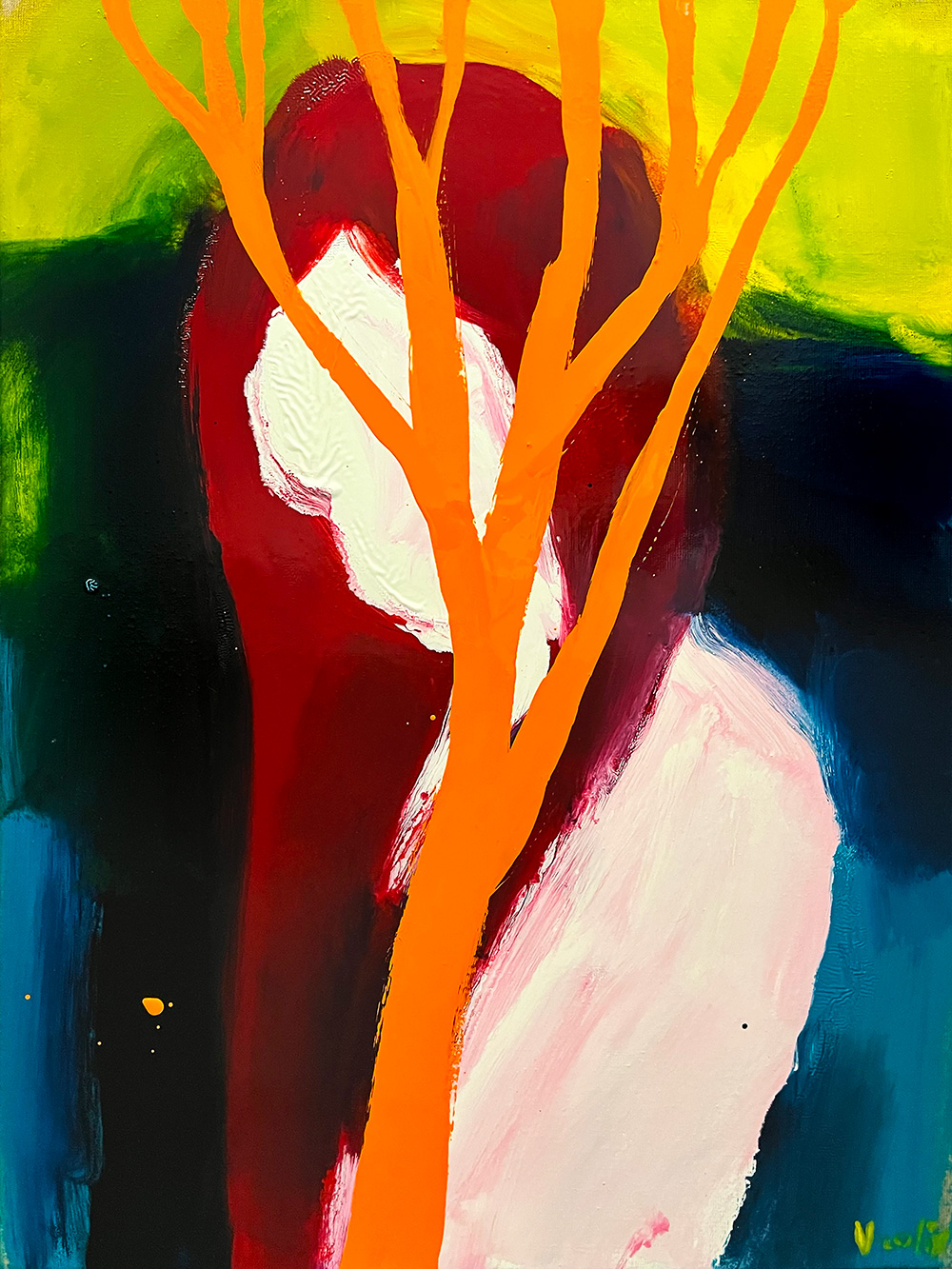
A Walk In The Woods (oil & glaze medium on natural linen, 60 x 80 cm, 2024).
THE WIRED SERIES
"Lines are like the wiring of a painting."
WIRED OUTSIDE
The tree portraits almost automatically led to the next series, but the other way around. I first painted a landscape and later added a figure with simple colored lines.
Is the figure really there? Maybe it's just a memory or a dream.
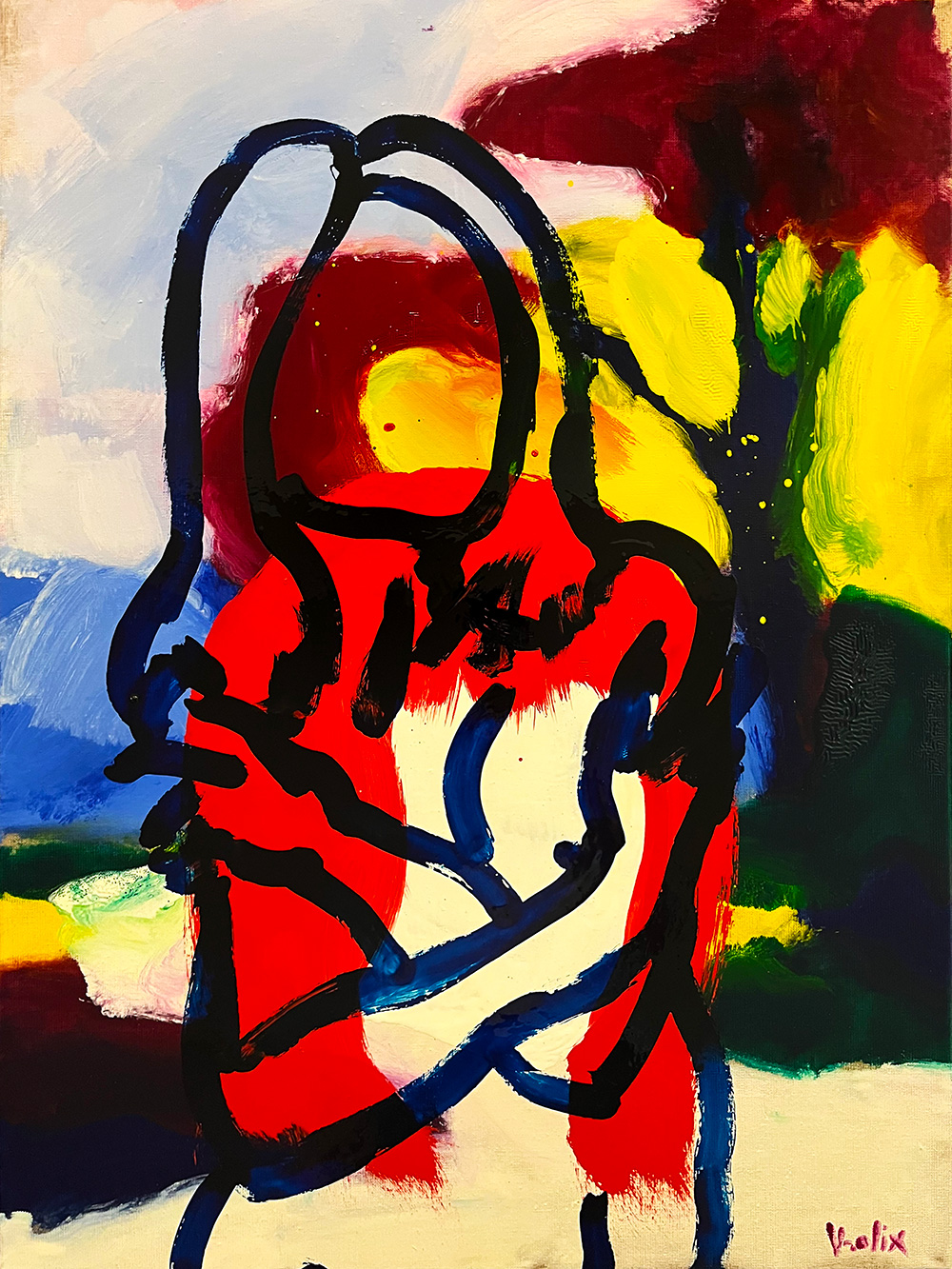
The Crossing (oil & glaze medium on natural linen, 60 x 80 cm, 2024).
WIRED ON PAPER
There is something magical about drawing with oil pastels on paper. They are very tangible and much closer to the artist's hand. The lines are flowing and the colors are rich.
These drawings have all been partially erased with turpentine, which creates an interesting tension in the image.
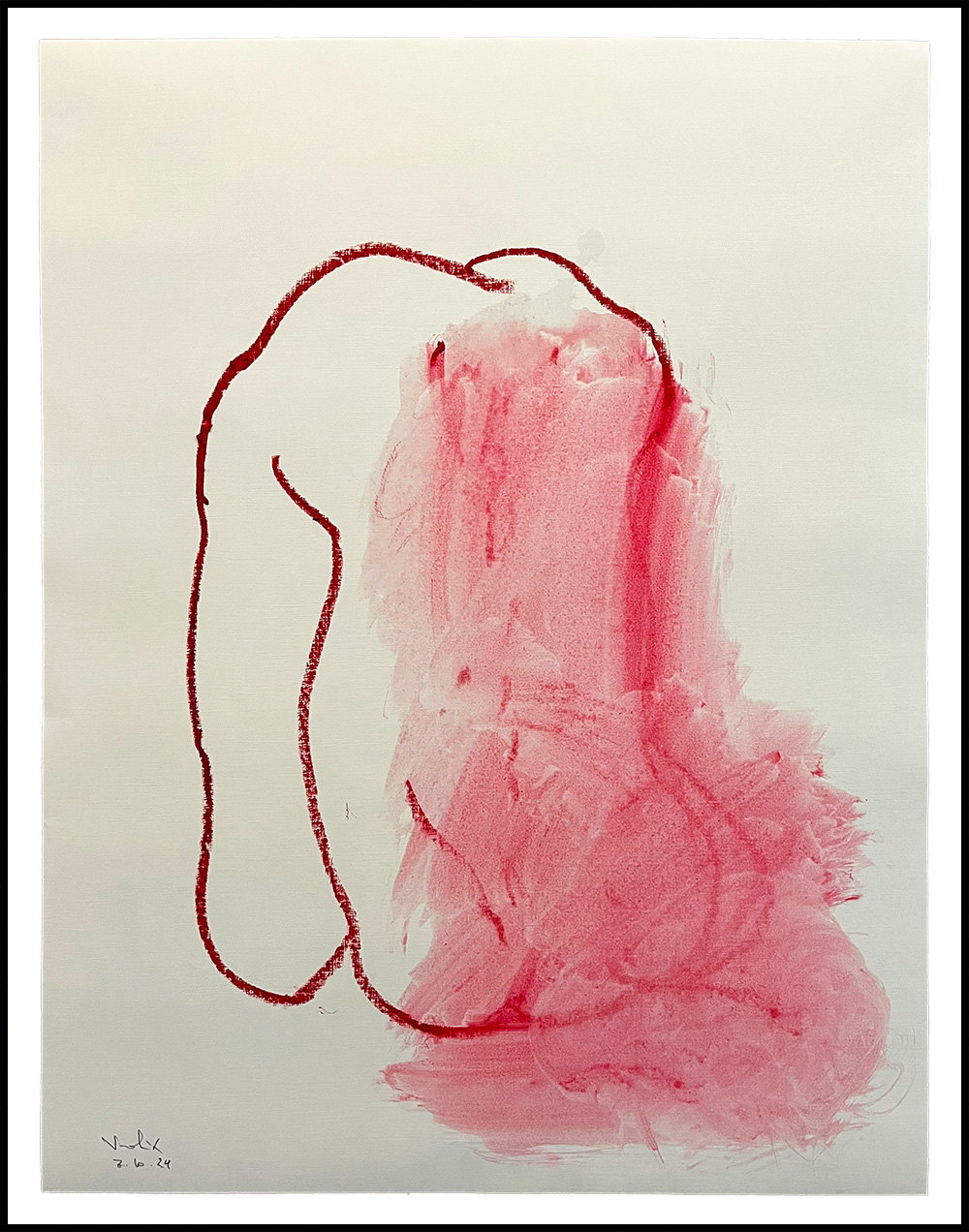
Downfall (oil pastels on paper, 50 x 65 cm, 2024).
WIRED COLORS
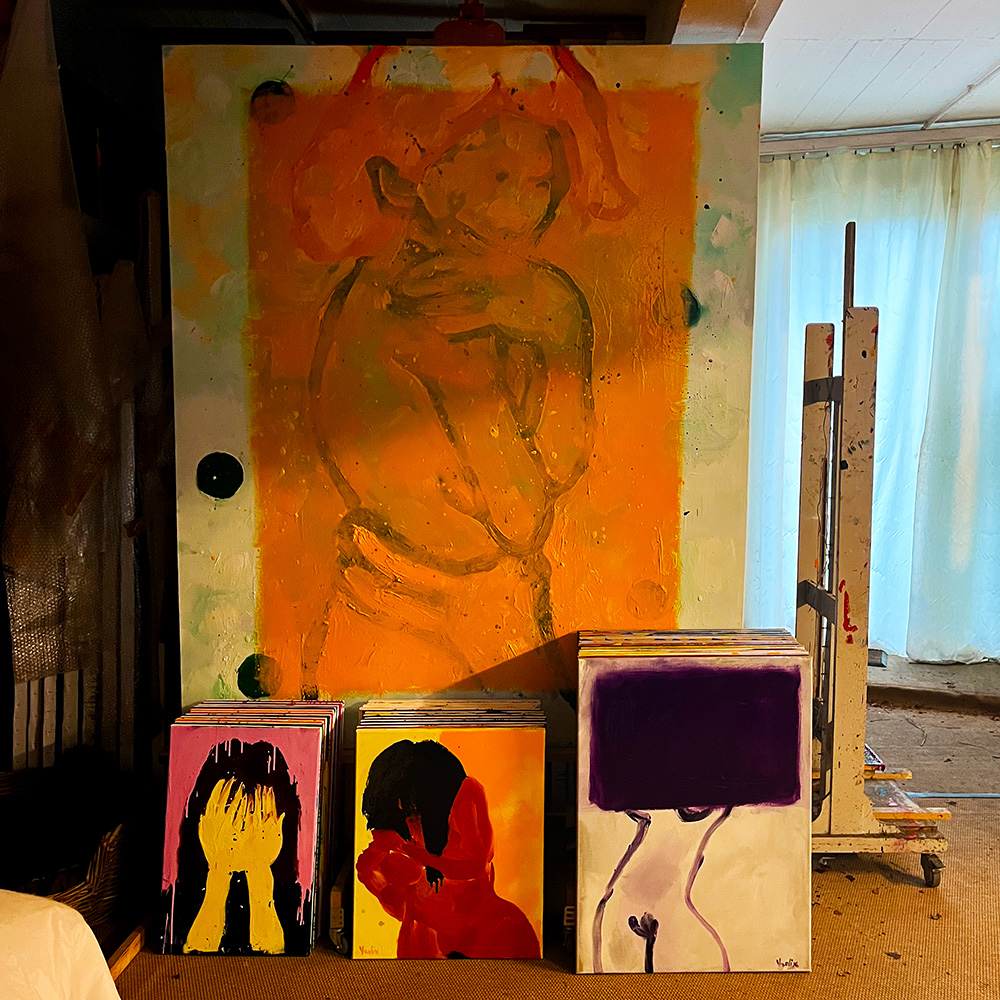
After a while I started thinking about the meaning or rather the function of the final layer.
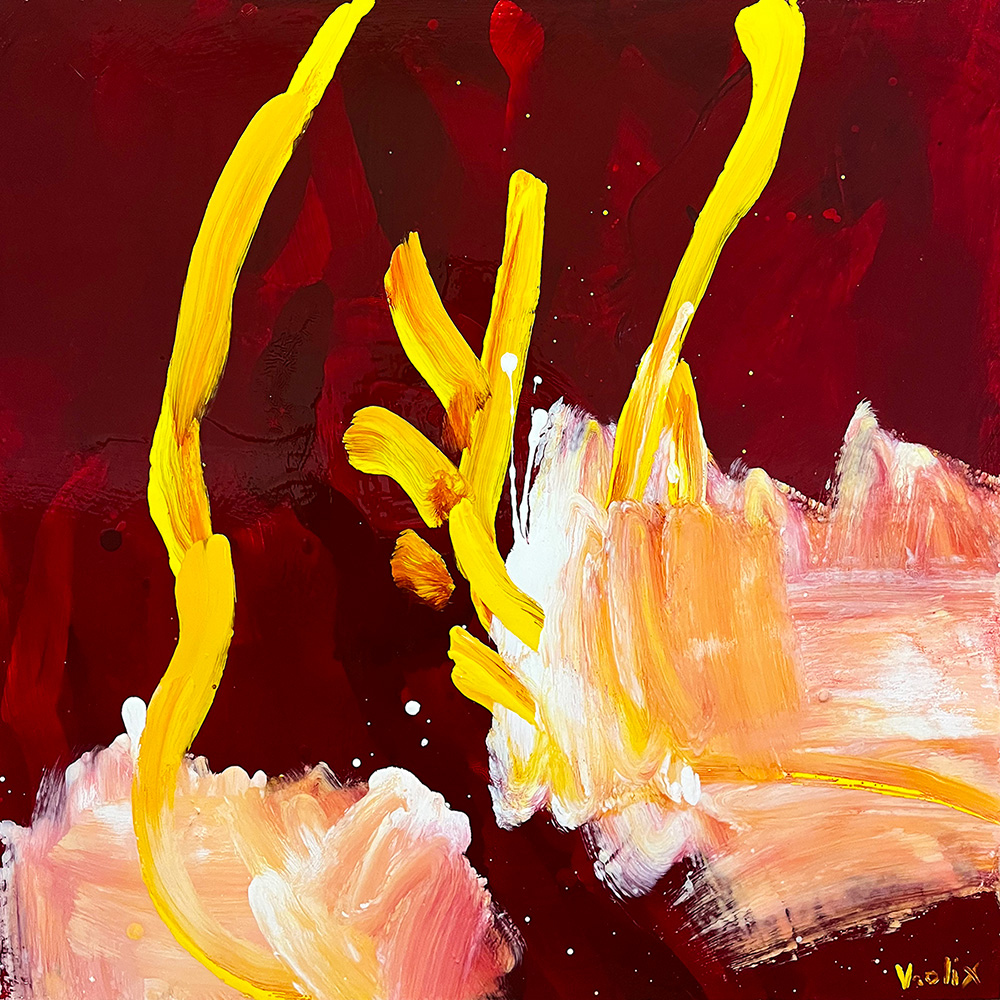
Inside Out (oil & glaze medium on canvas, 80 x 80 cm, 2024).
Then I realized that a layer can have its own identity. So I decided to use the layer as itself.
WIRED LANDSCAPES
In painting terms this means that the final layer becomes a solid block, which can be more or less transparent depending on how far I want to go.
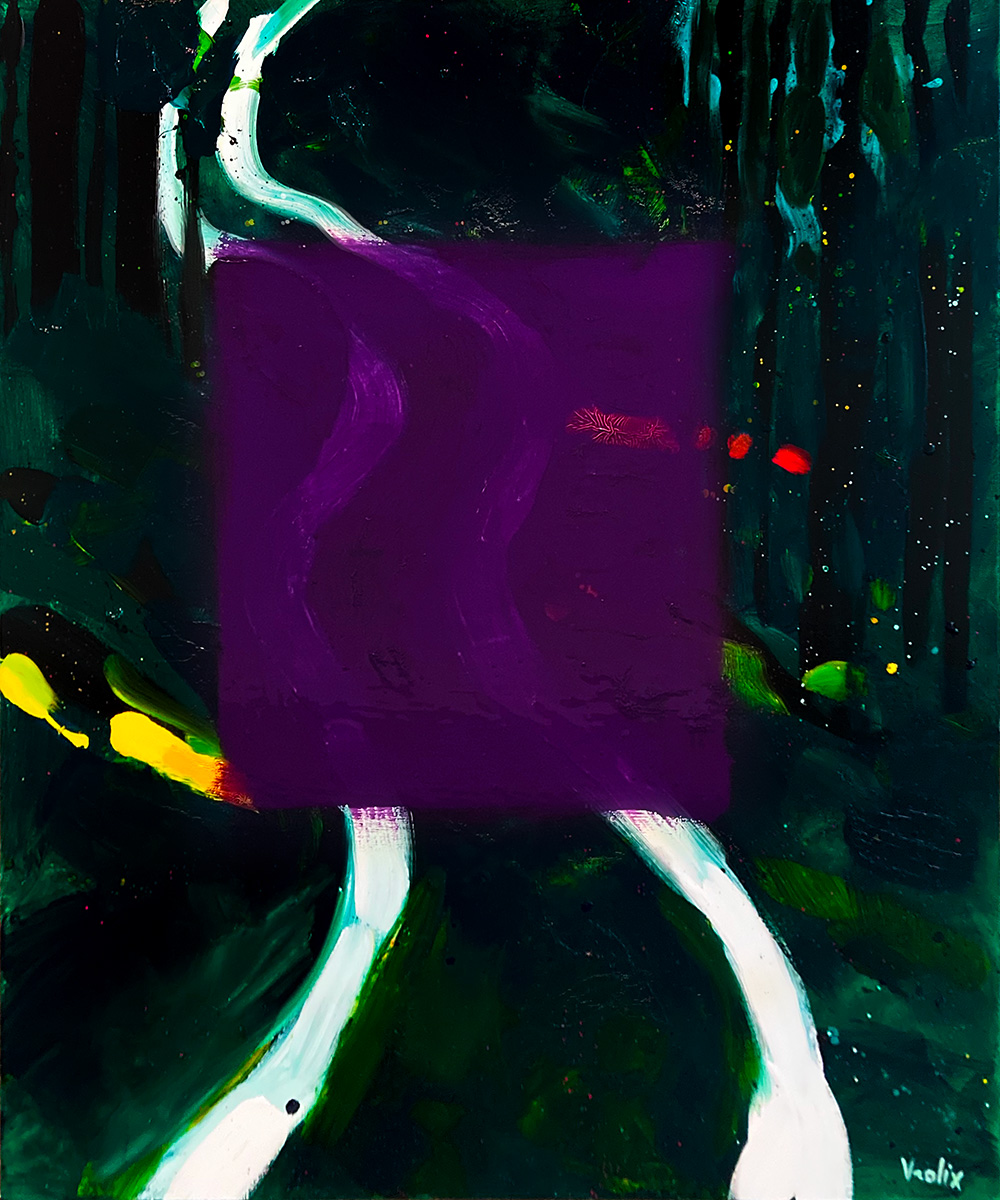
The Road Ahead (oil & glaze medium on canvas, 100 x 120 cm, 2024).
Because the meaning of this last layer is now separate from the rest of the painting, but still part of it, these works become almost mysterious.
WIRED PORTRAITS
You could say that I 'destroy' the painting by applying that last layer. But again, what it seems to hide is emphasized.
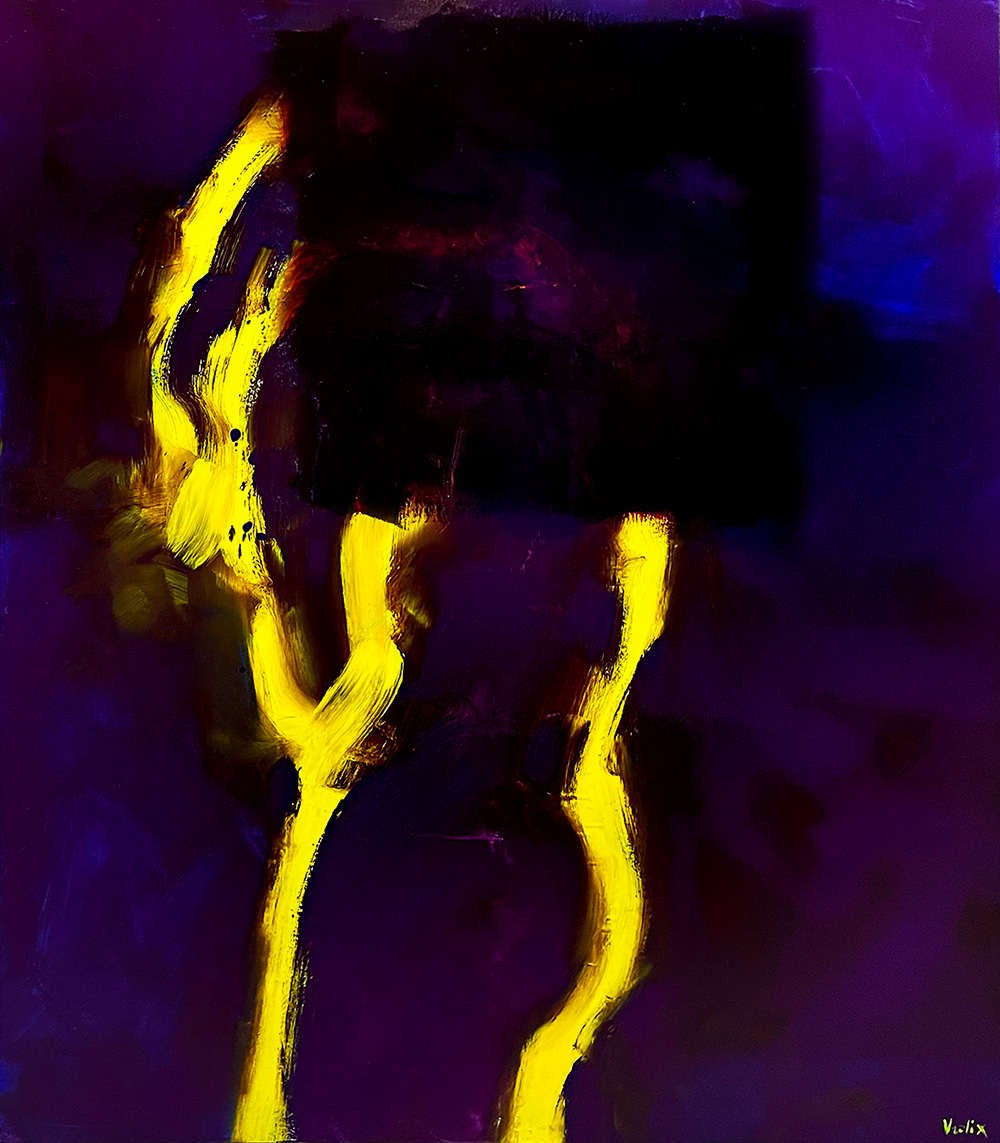
Live Never Goes To Plan (oil & glaze medium on canvas, 140 x 160 cm, 2024).
Showing by hiding, so to speak.
WIRED STUDIO
These works are a kind of extension of the previous ones. You could call them a series of nude studies.
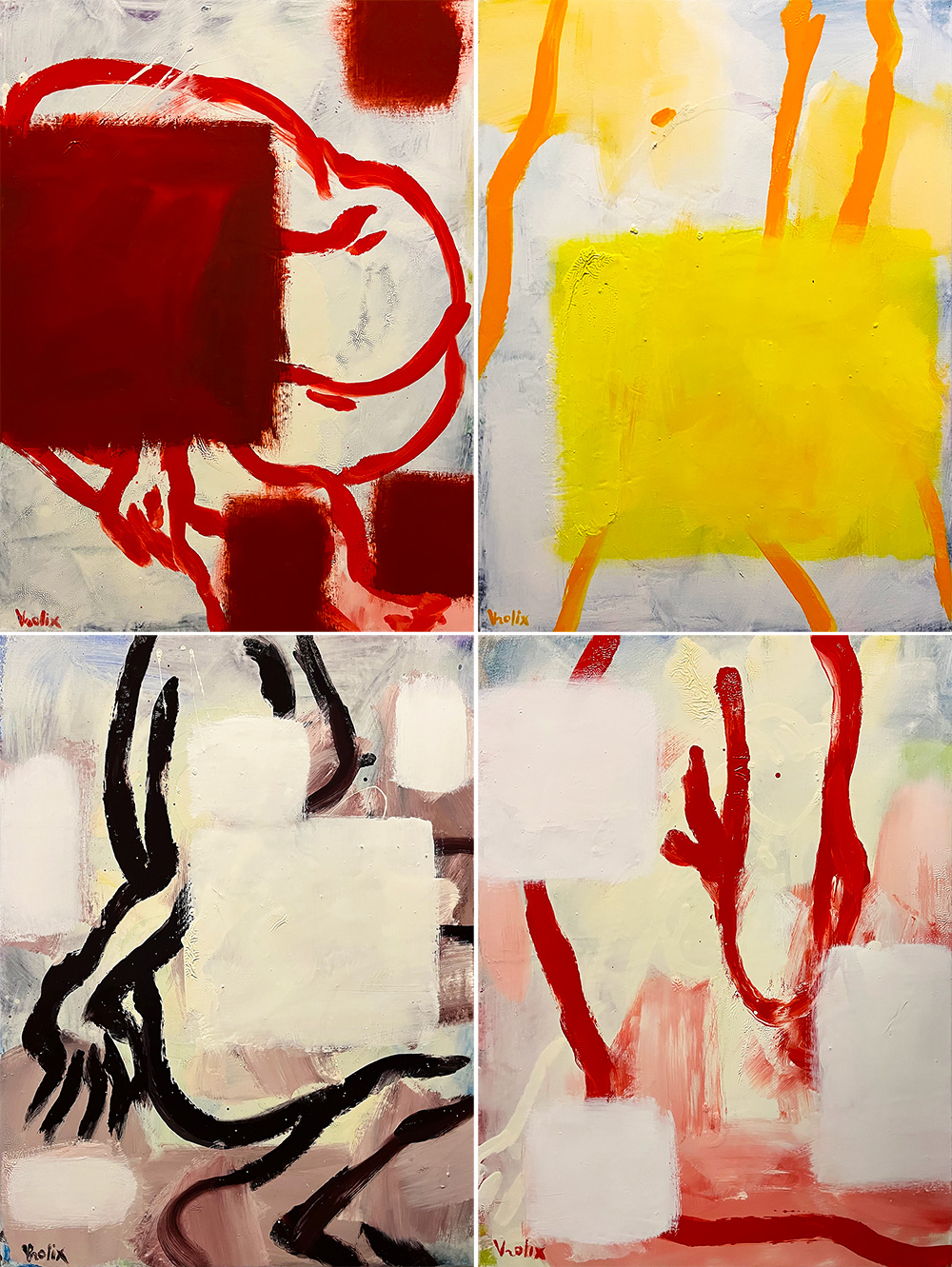
Studio paintings, on white (oil & glaze medium on natural linen, 60 x 80 cm, 2024).
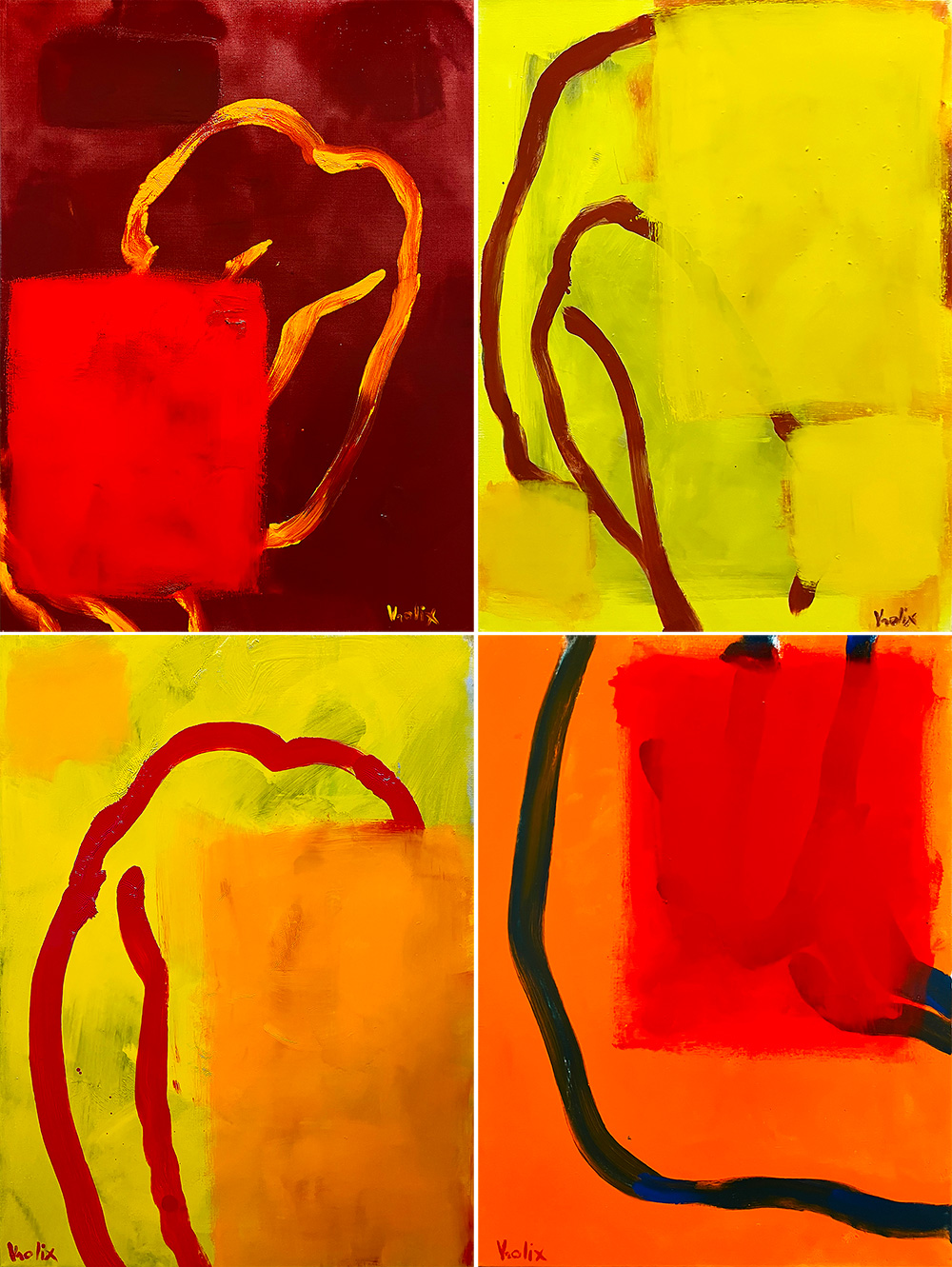
Studio paintings, on color (oil & glaze medium on natural linen, 60 x 80 cm, 2024).
HIDE OR SHOW ?
"The secret is not to look back."
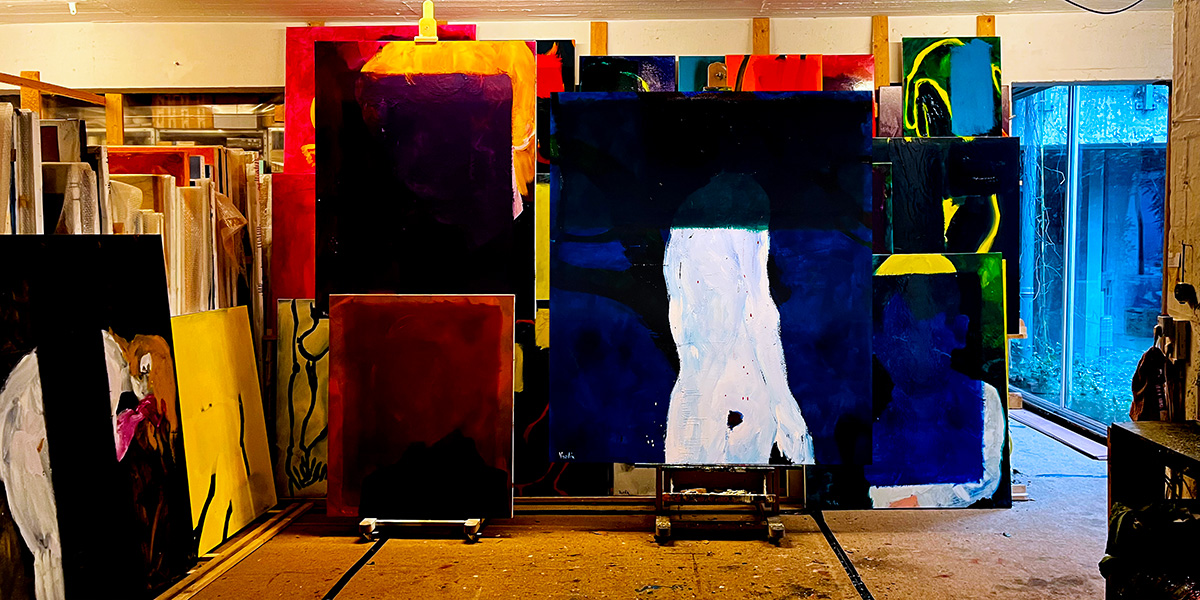
The idea of painting a final layer that is somehow detached from the painting itself can lead to intriguing results.
MASKS, ME
This is a series of self-portraits, but perhaps I should call it a study of the self, a kind of experiment with memories.
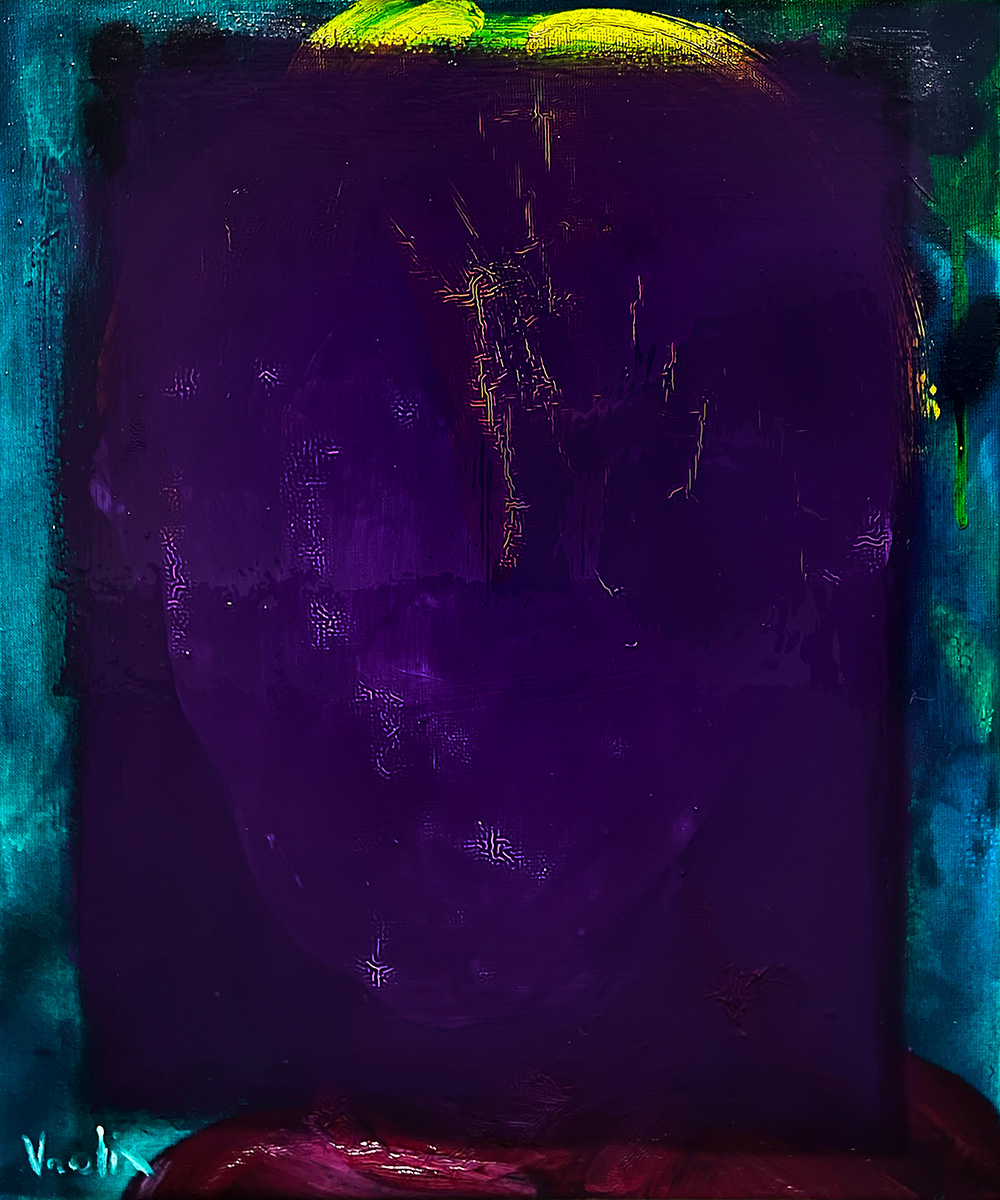
Self Portrait In Purple, Age 6 (oil & glaze medium on canvas, 50 x 60 cm, 2024).
Am I hiding something or emphasizing something?
Probably both.
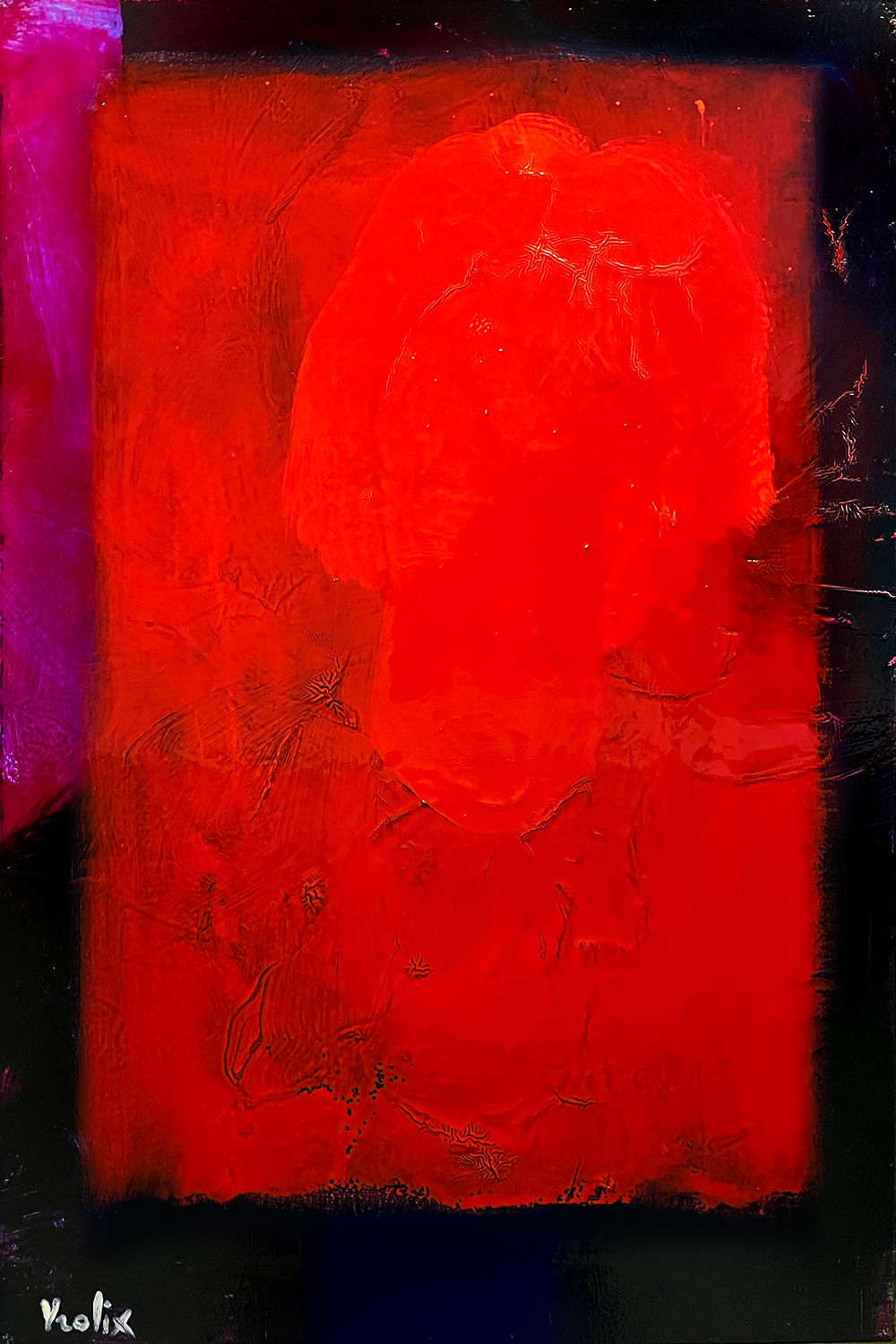
Self Portrait In Red, Age 16 (oil & glaze medium on canvas, 60 x 90 cm, 2024).
MASKS, THEM
These are probably the same kind of experiments, but with different people than myself.
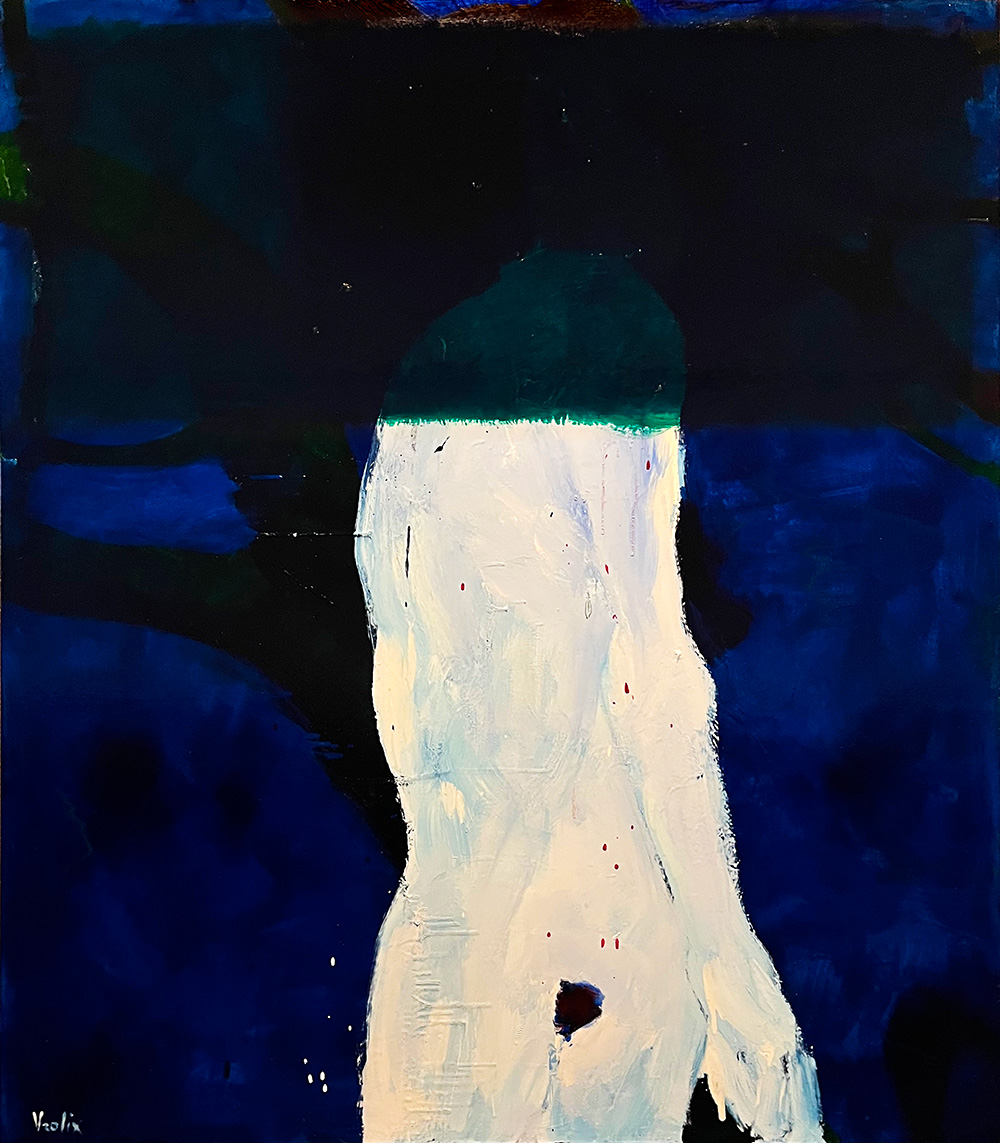
Where Stories Die (oil & glaze medium on canvas, 140 x 160 cm, 2024).
THE VEILED NUDES
"Is there a difference between a mask and a veil?."
VEILED
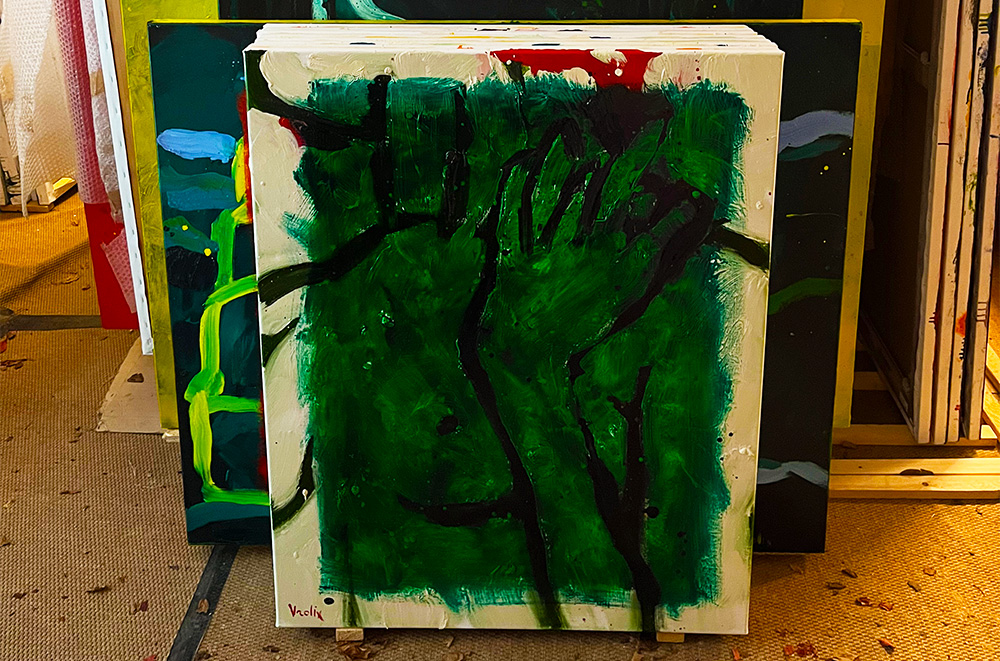
The last series of paintings are all veiled with a transparent color. Portraits, yes. Nudes, most of them. But all these works have the same storyline. Or rather, the same thing happens to them.
They got emphasized!
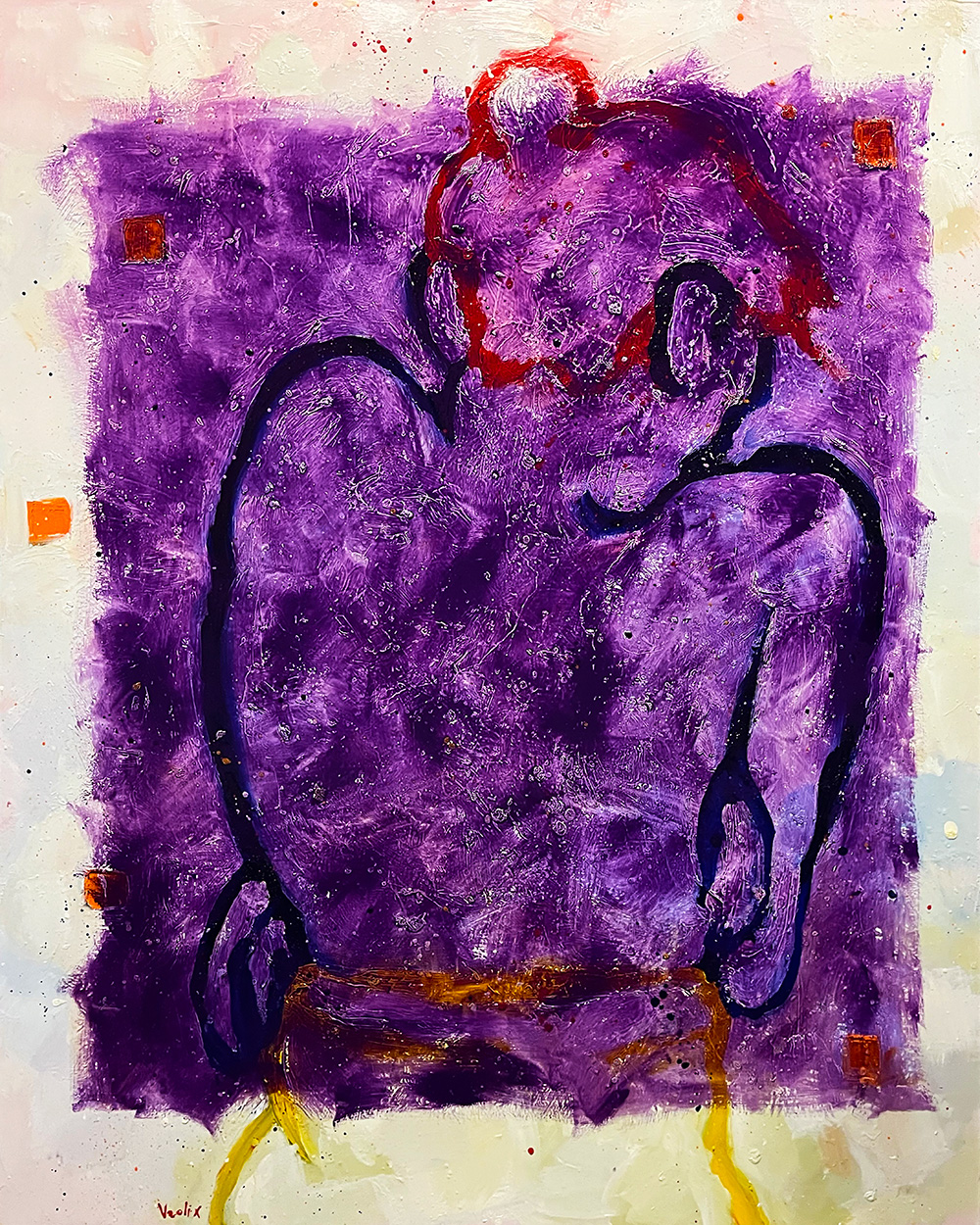
The Purple Veil (oil & glaze medium on canvas, 160 x 200 cm, 2024).
ENDNOTE
And to end this year on a mysterious note:
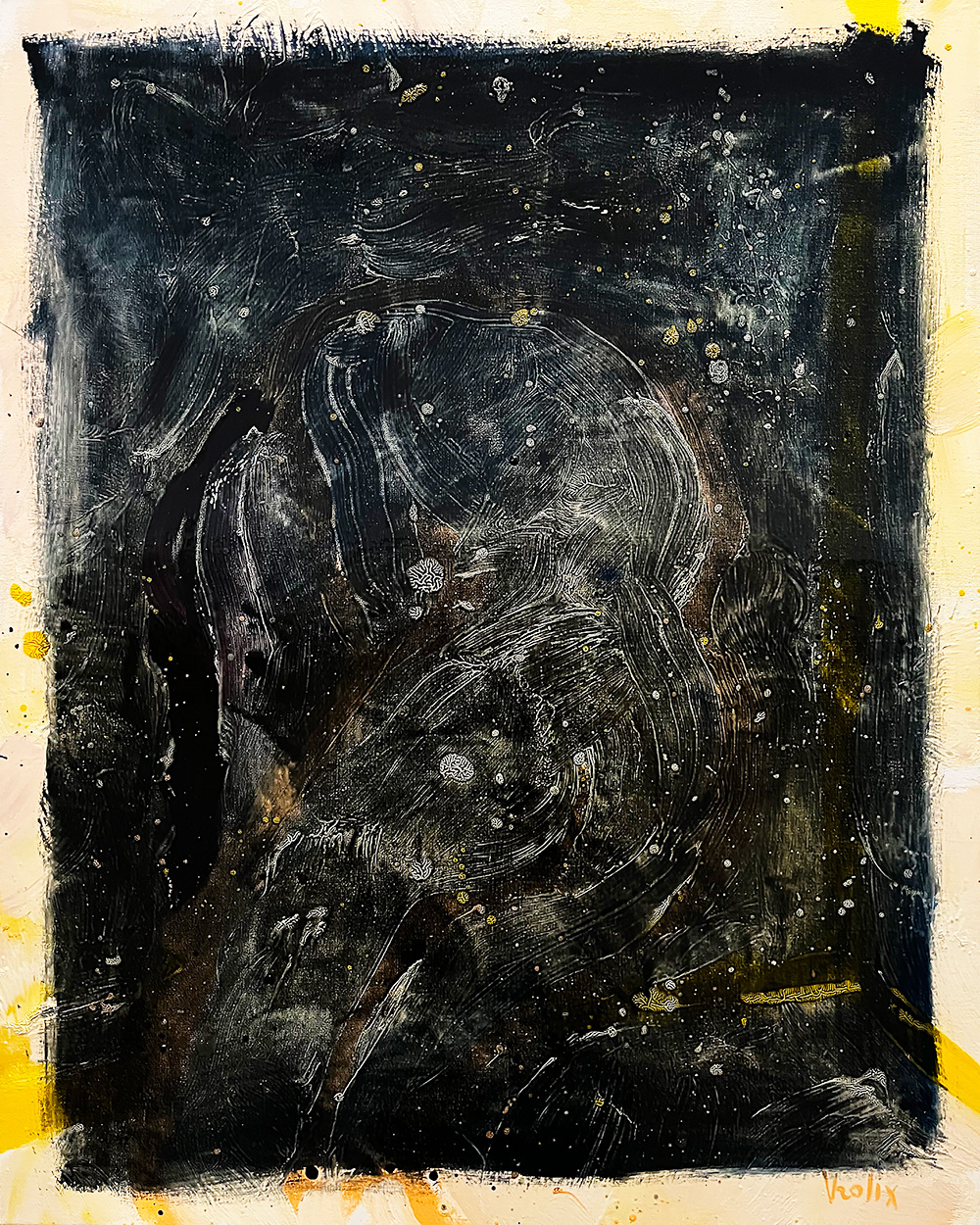
The Black Veil (oil & glaze medium on canvas, 80 x 100 cm, 2024).
It doesn't get more mysterious than this.